

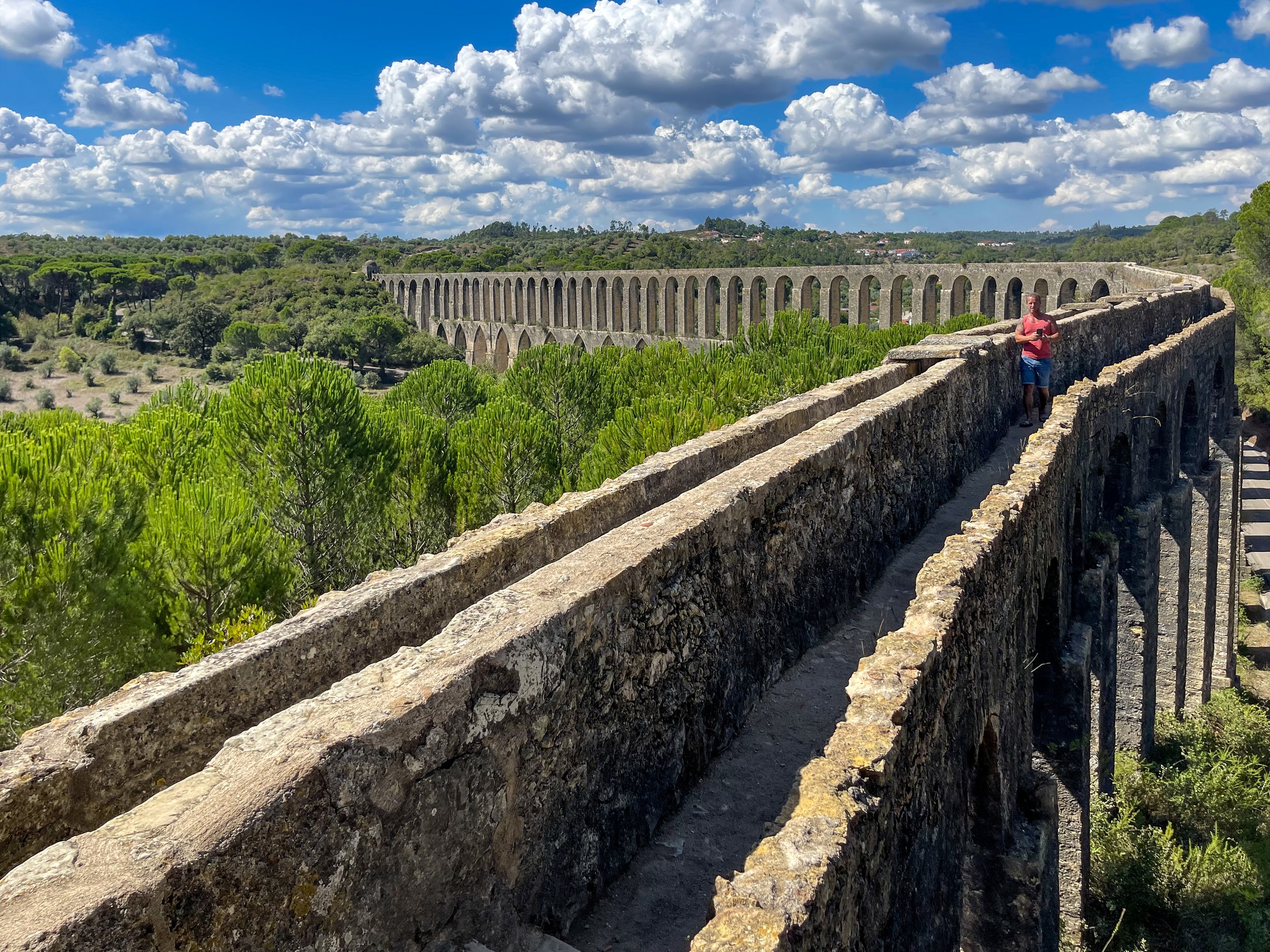



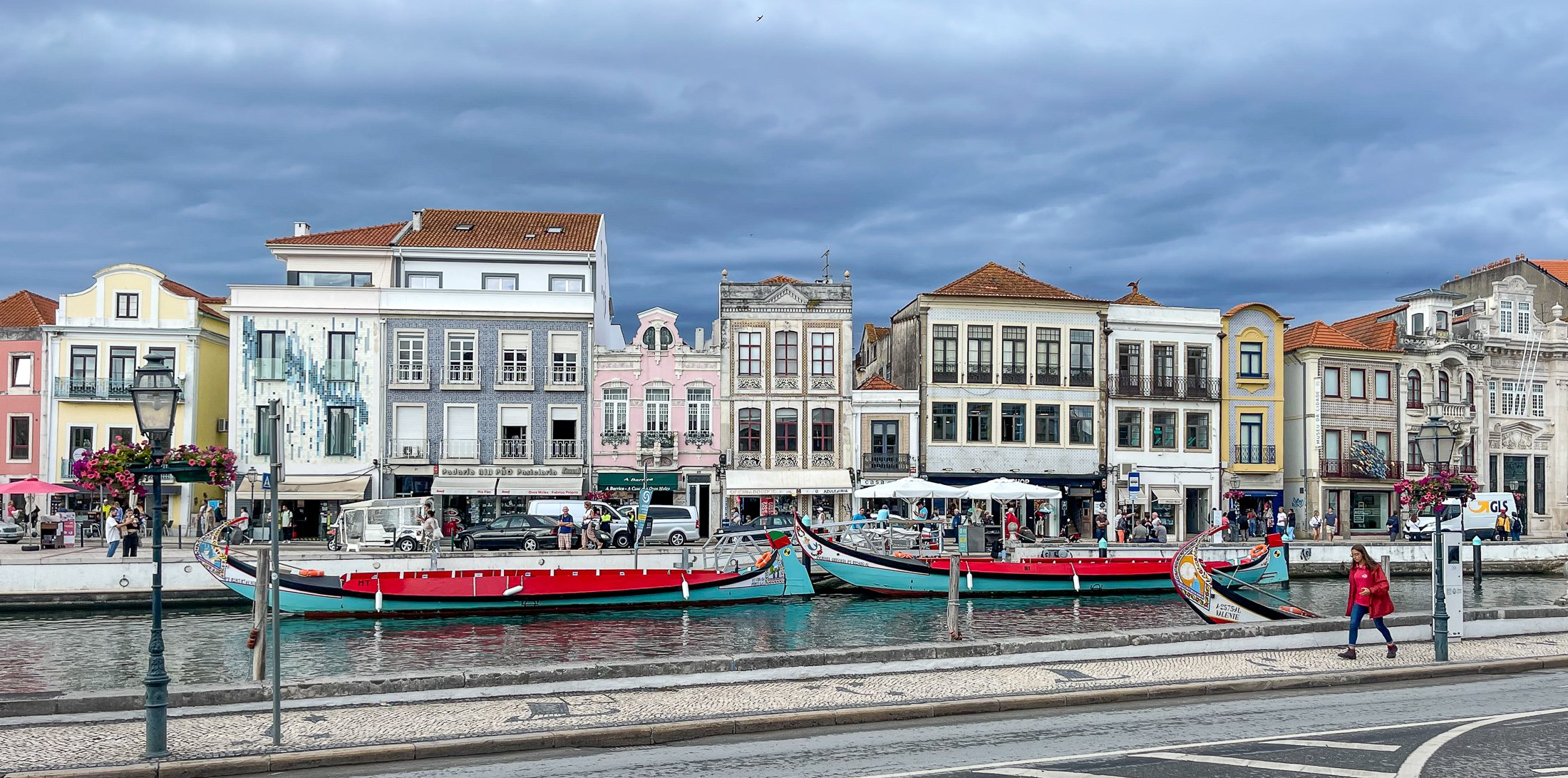


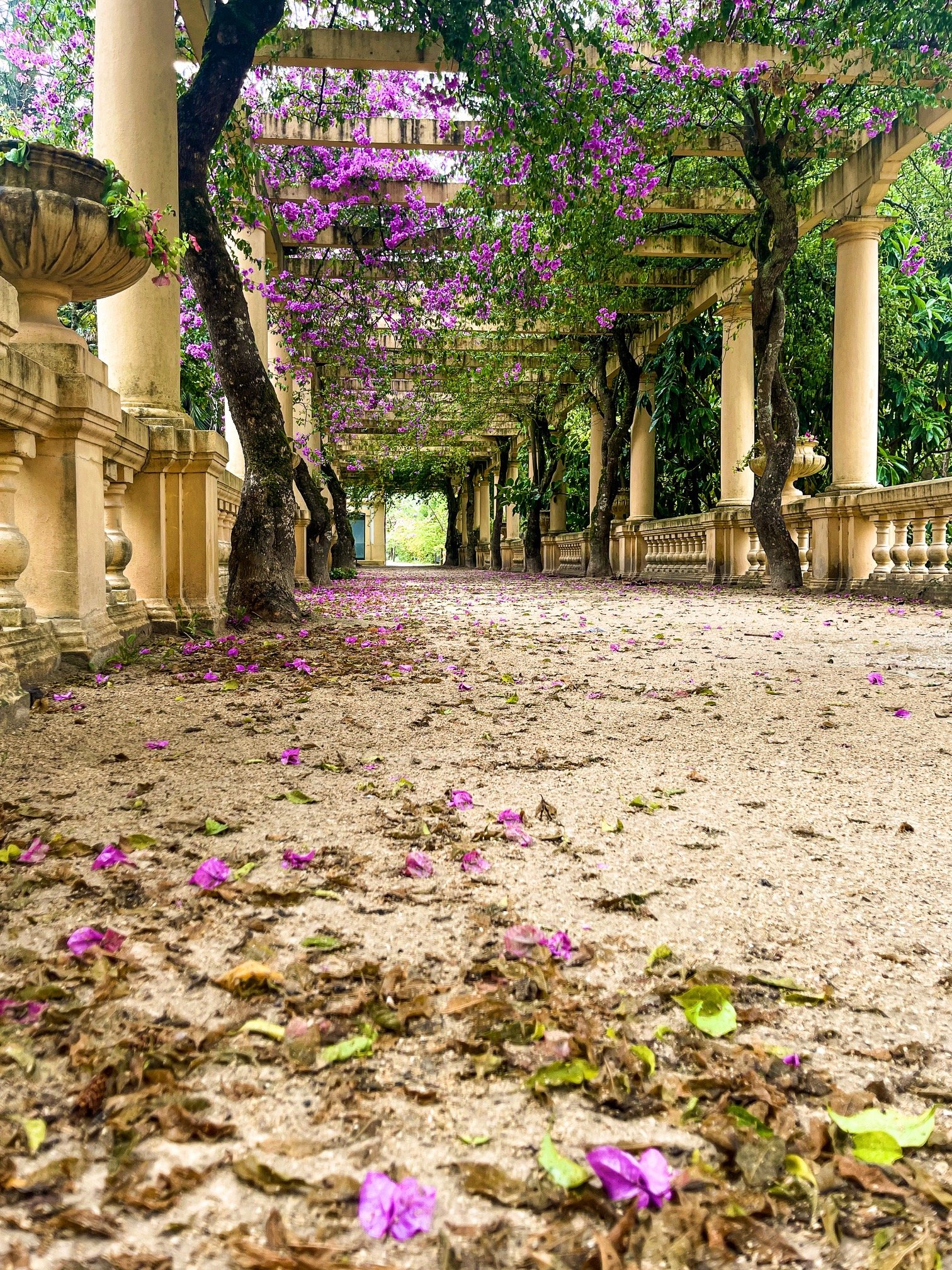


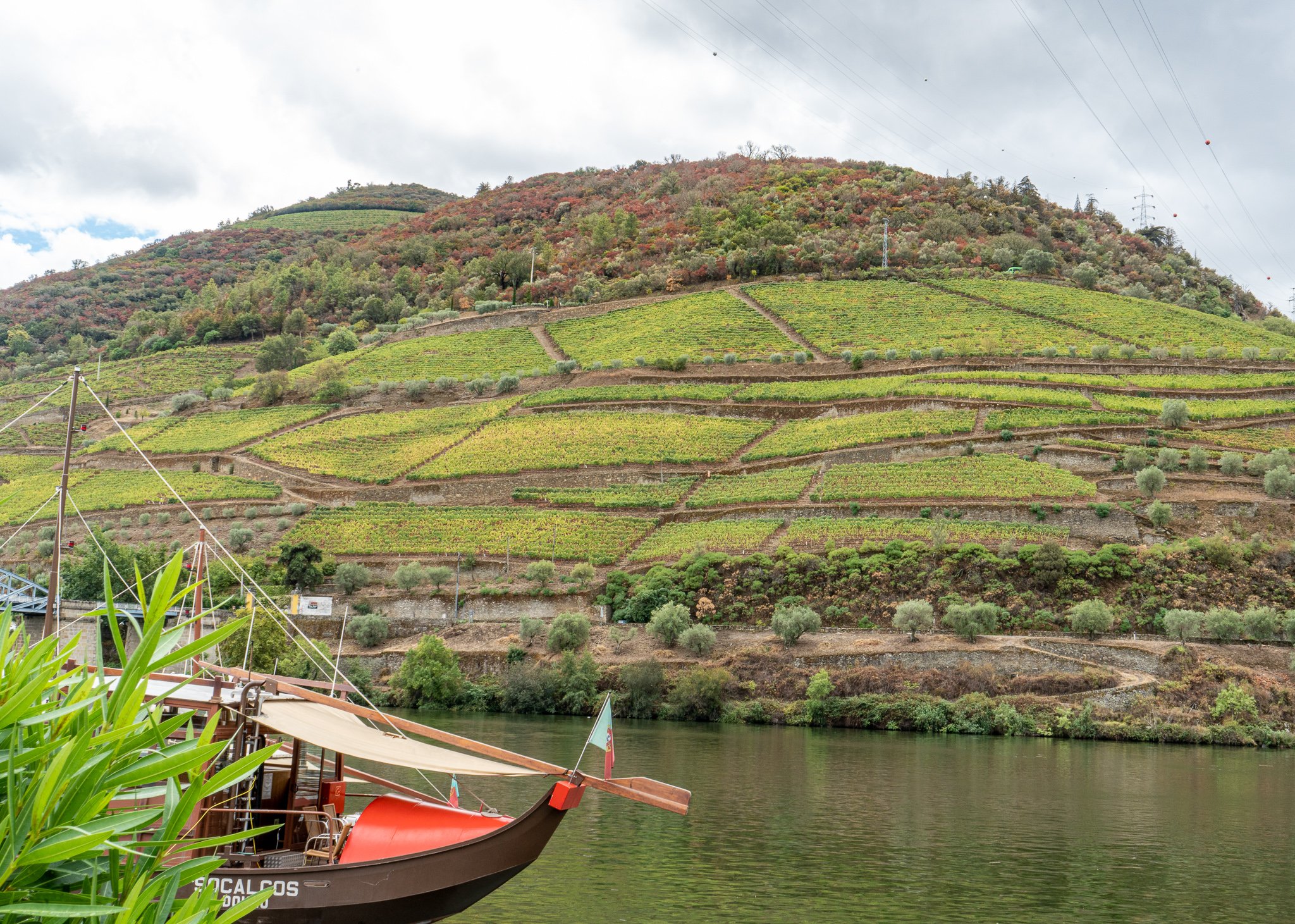


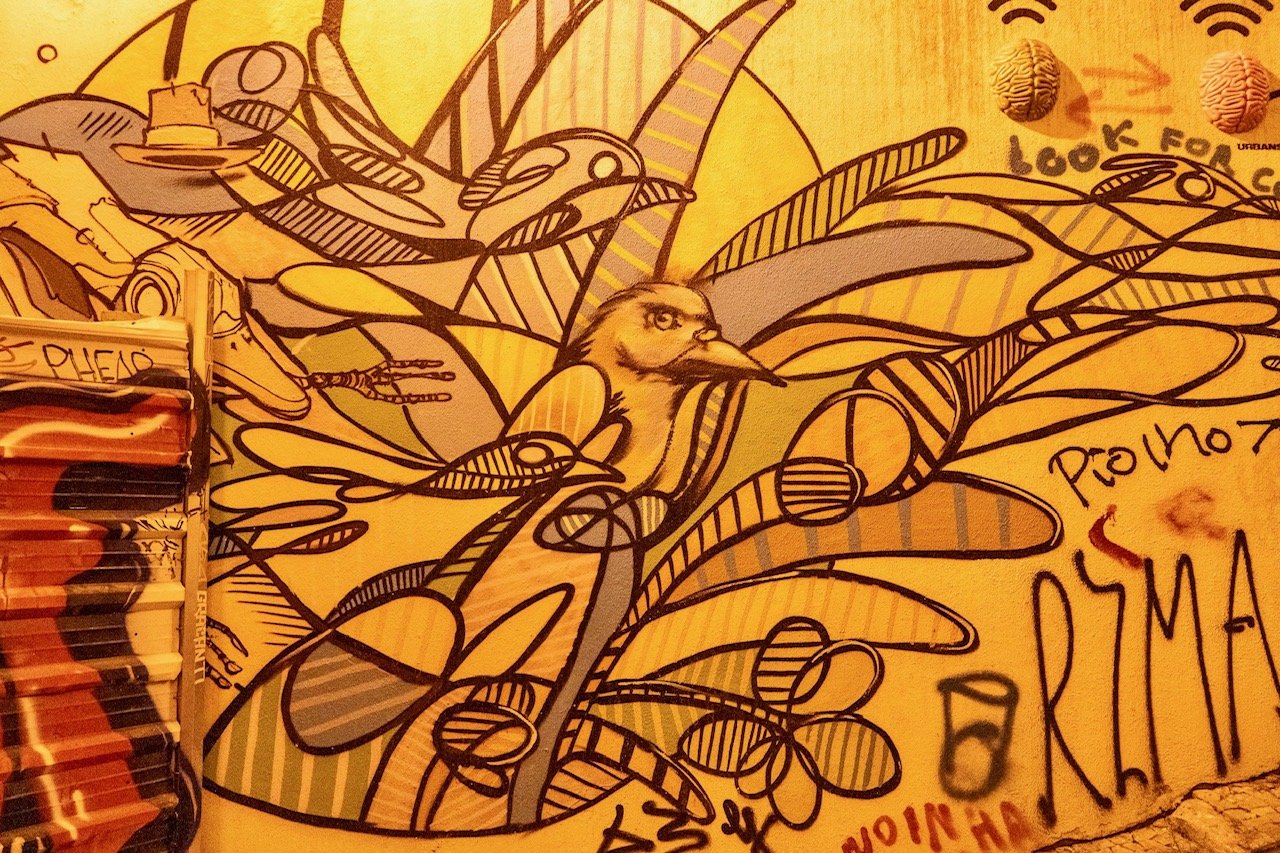
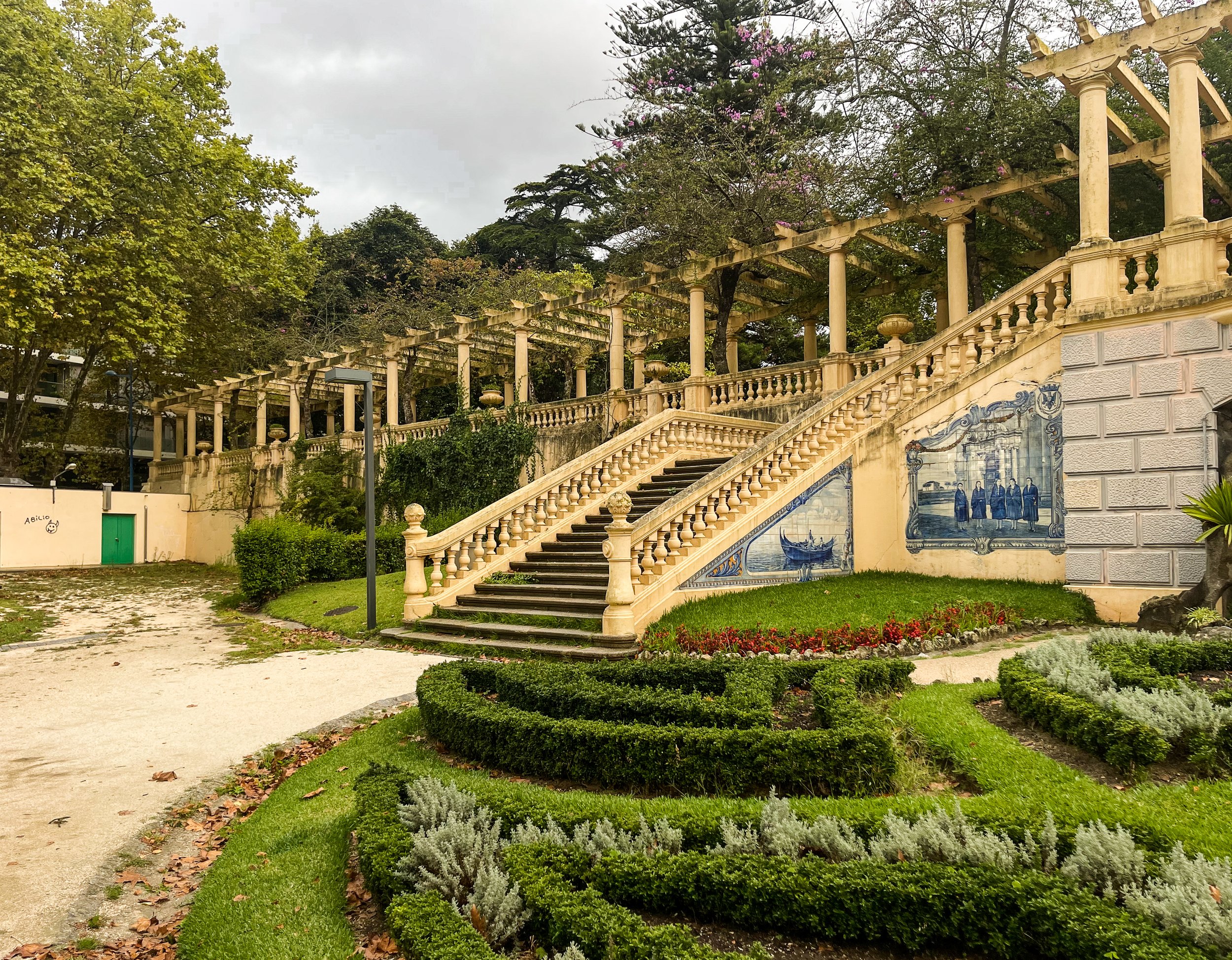
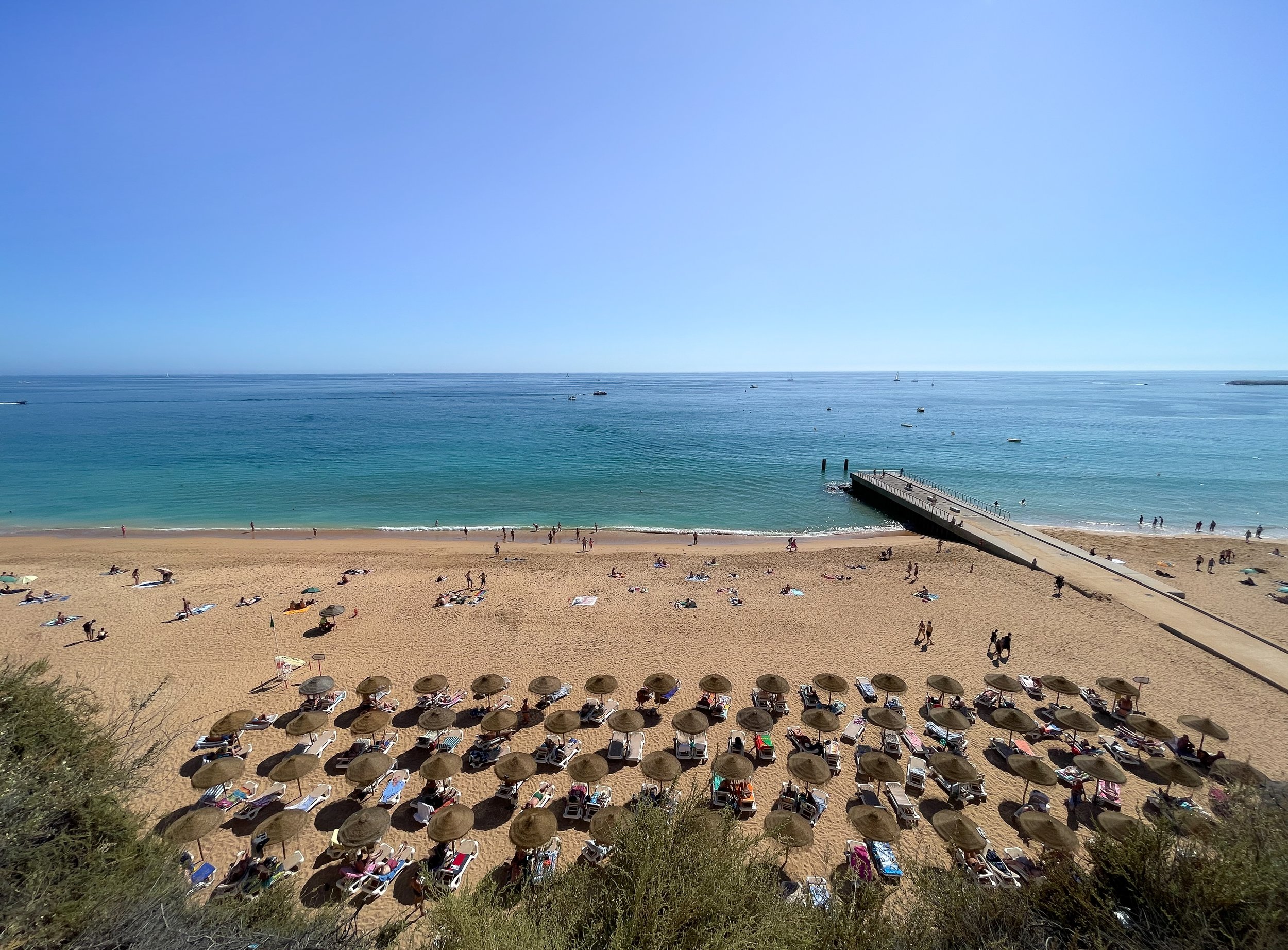
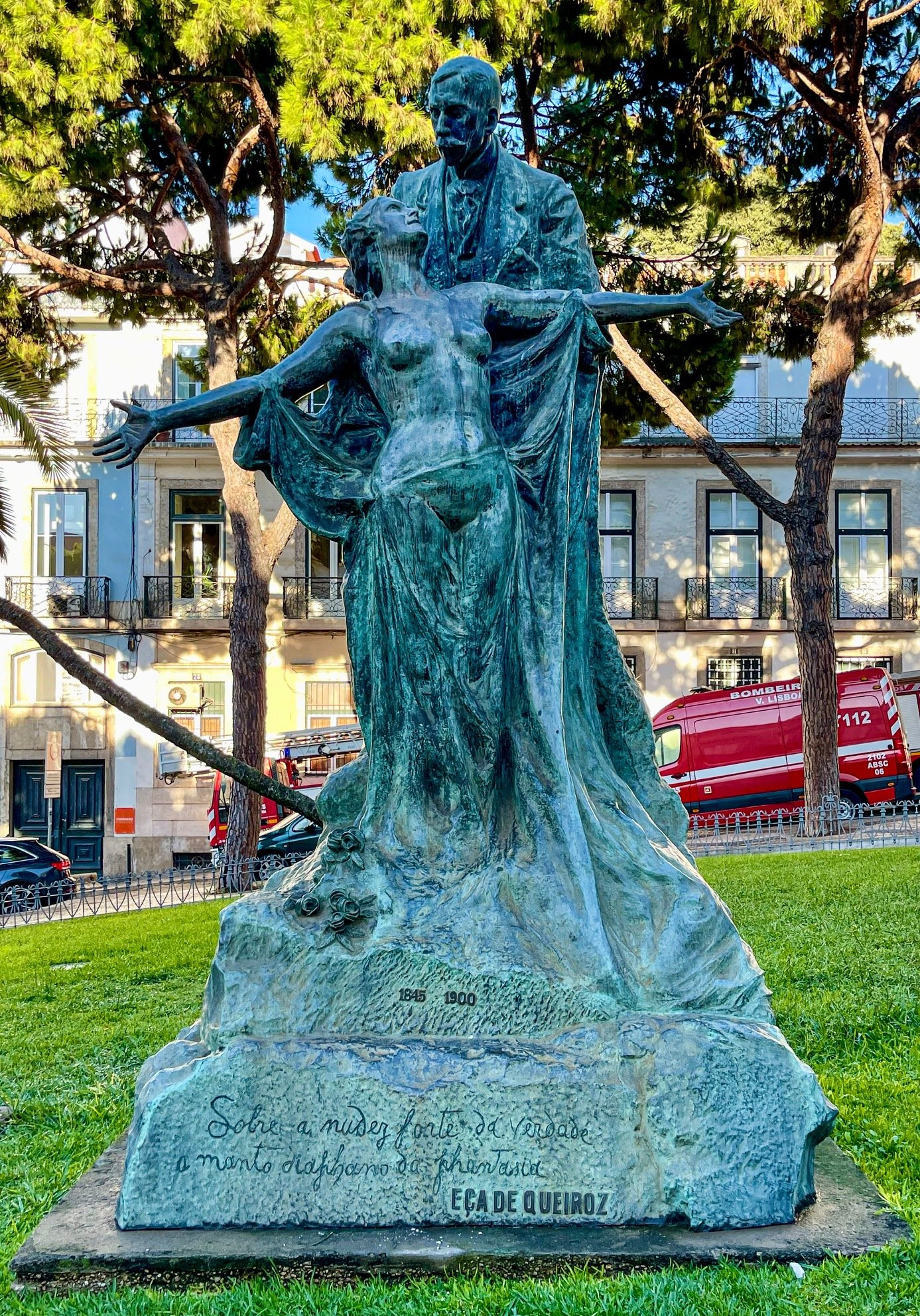
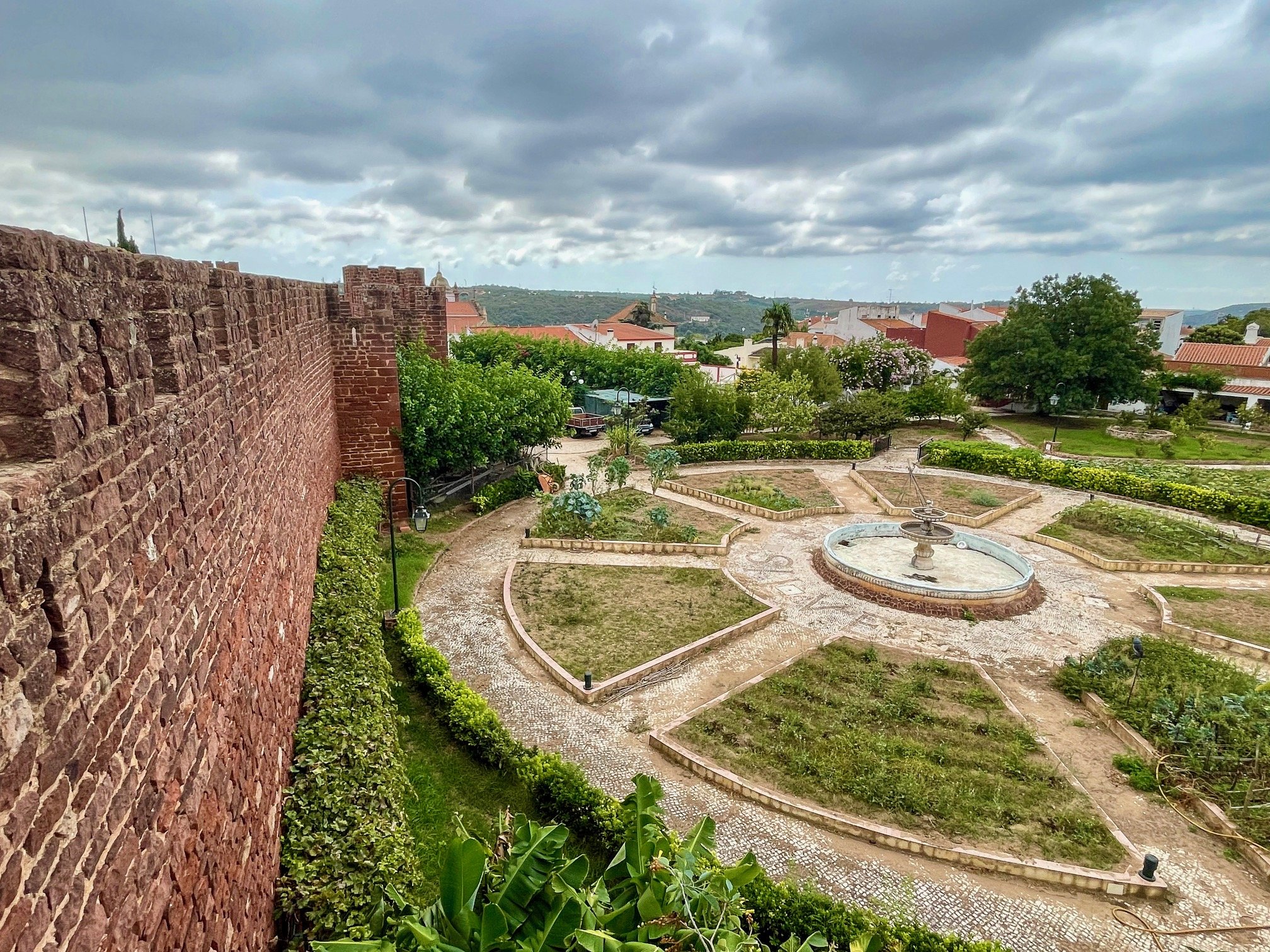
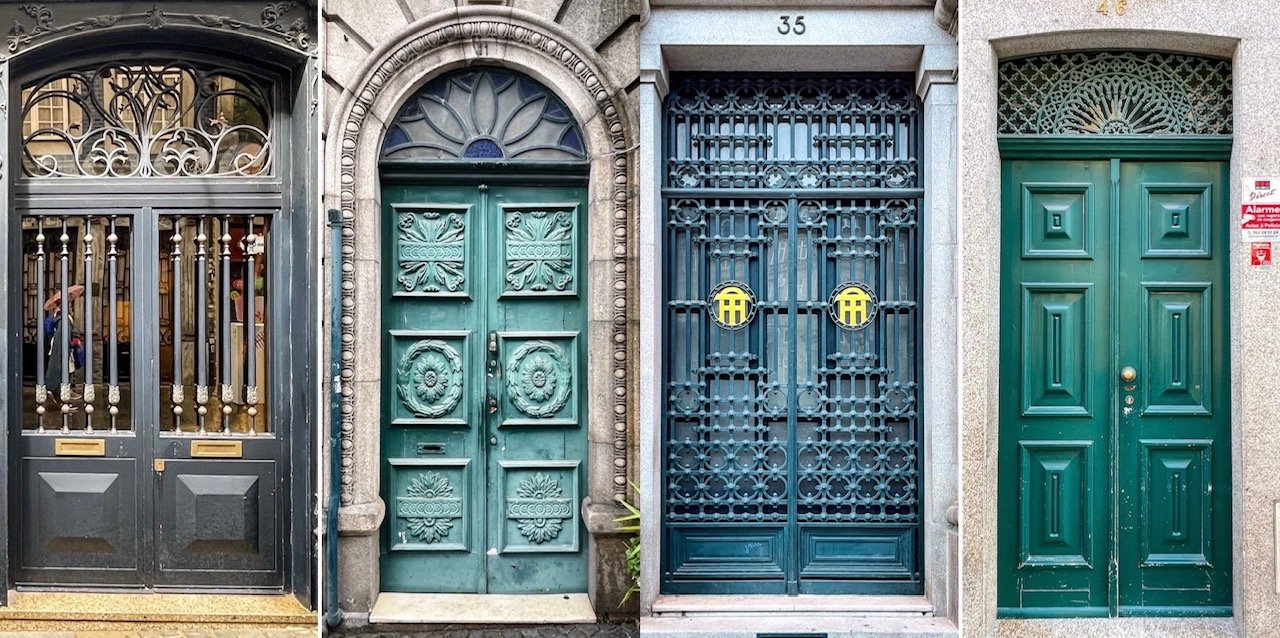

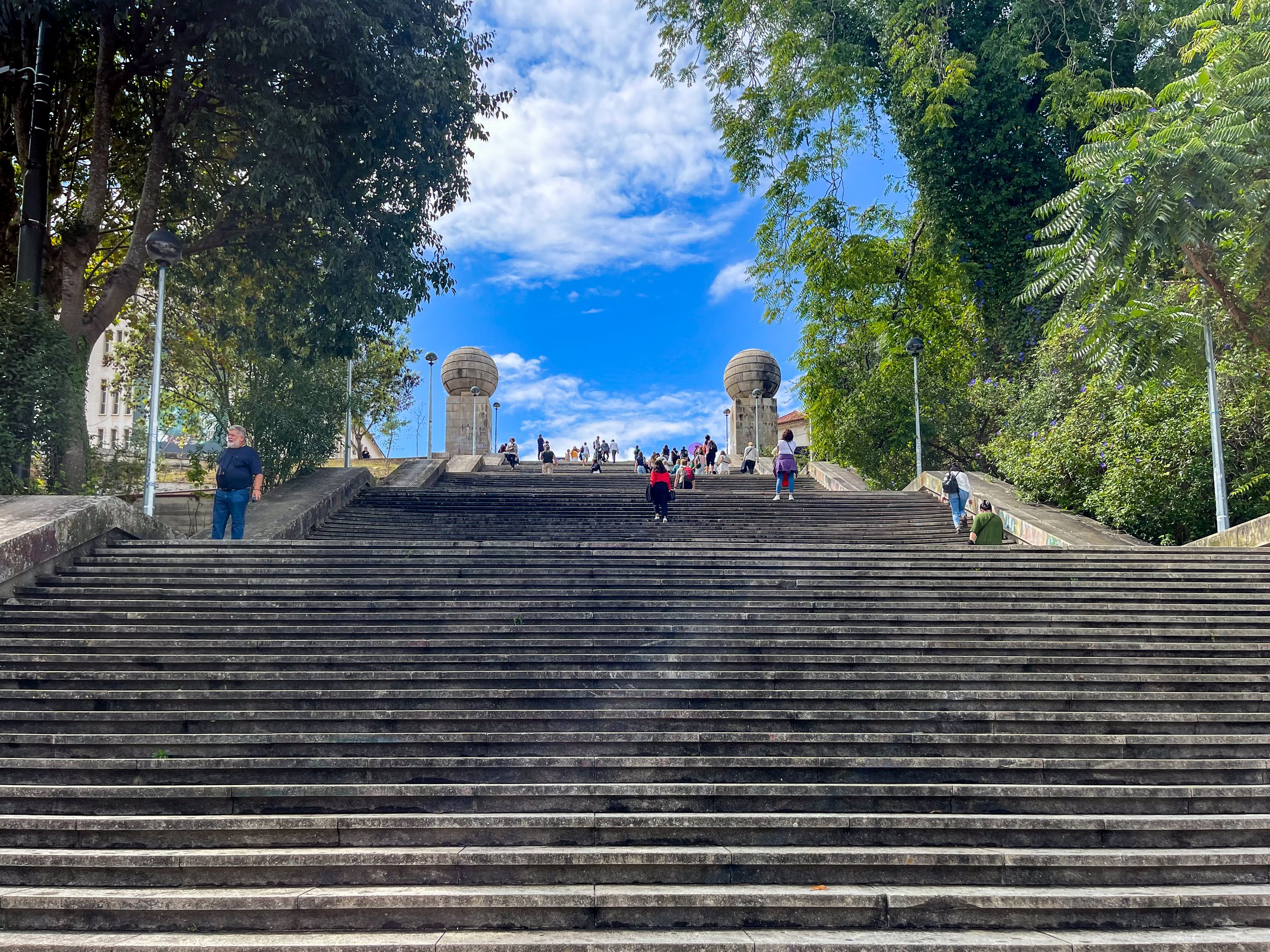
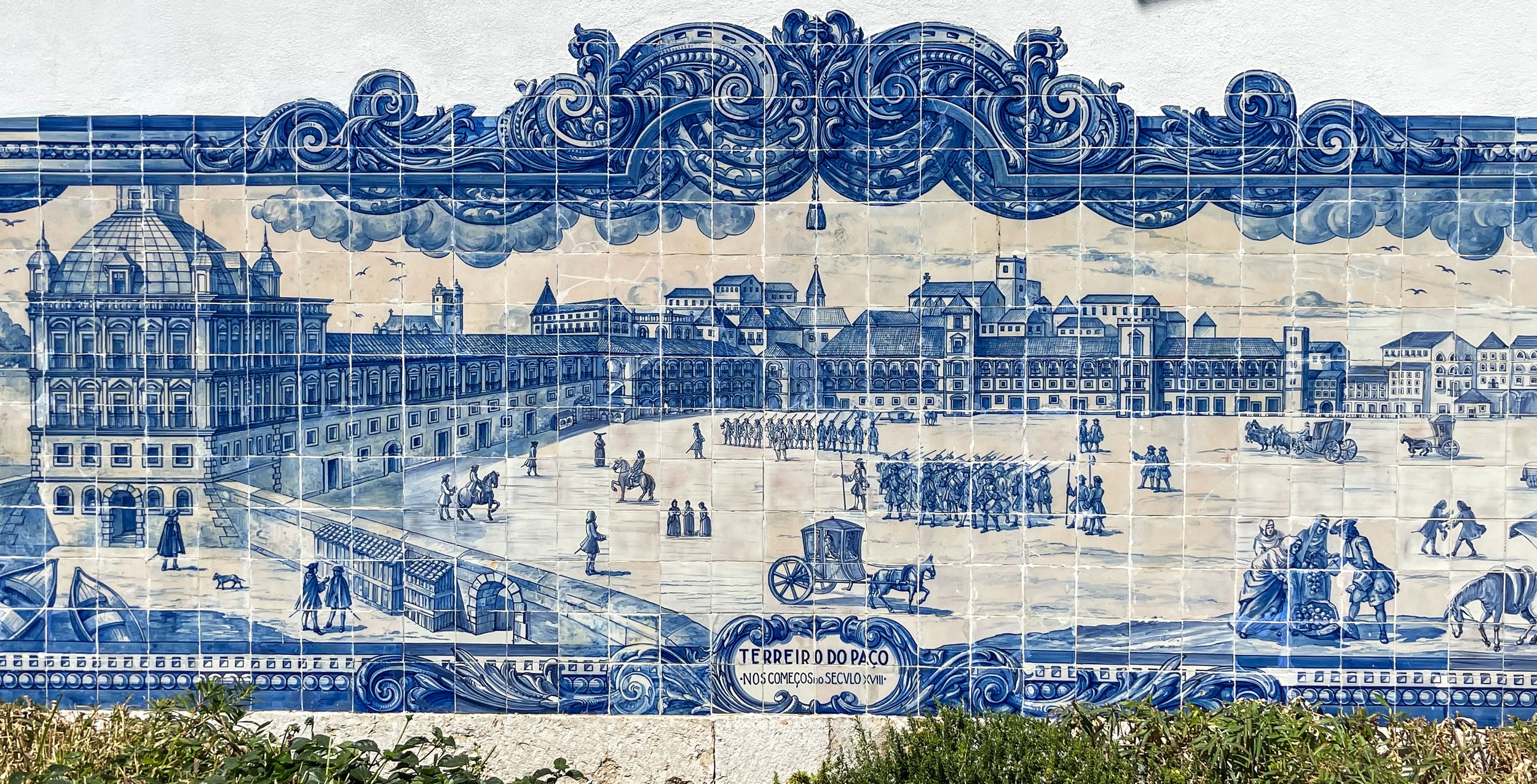
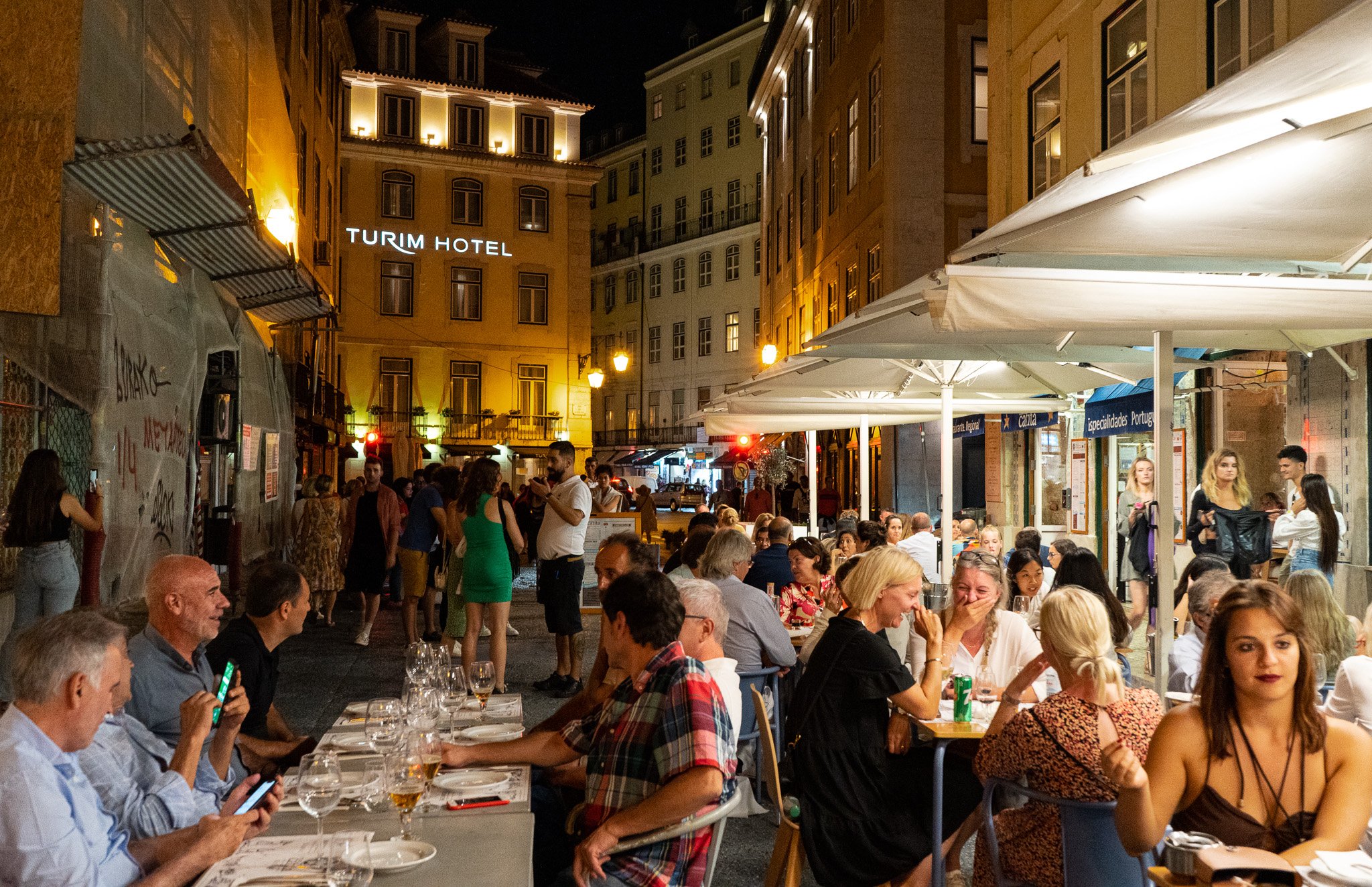

Monument to França Borges by Jardim França

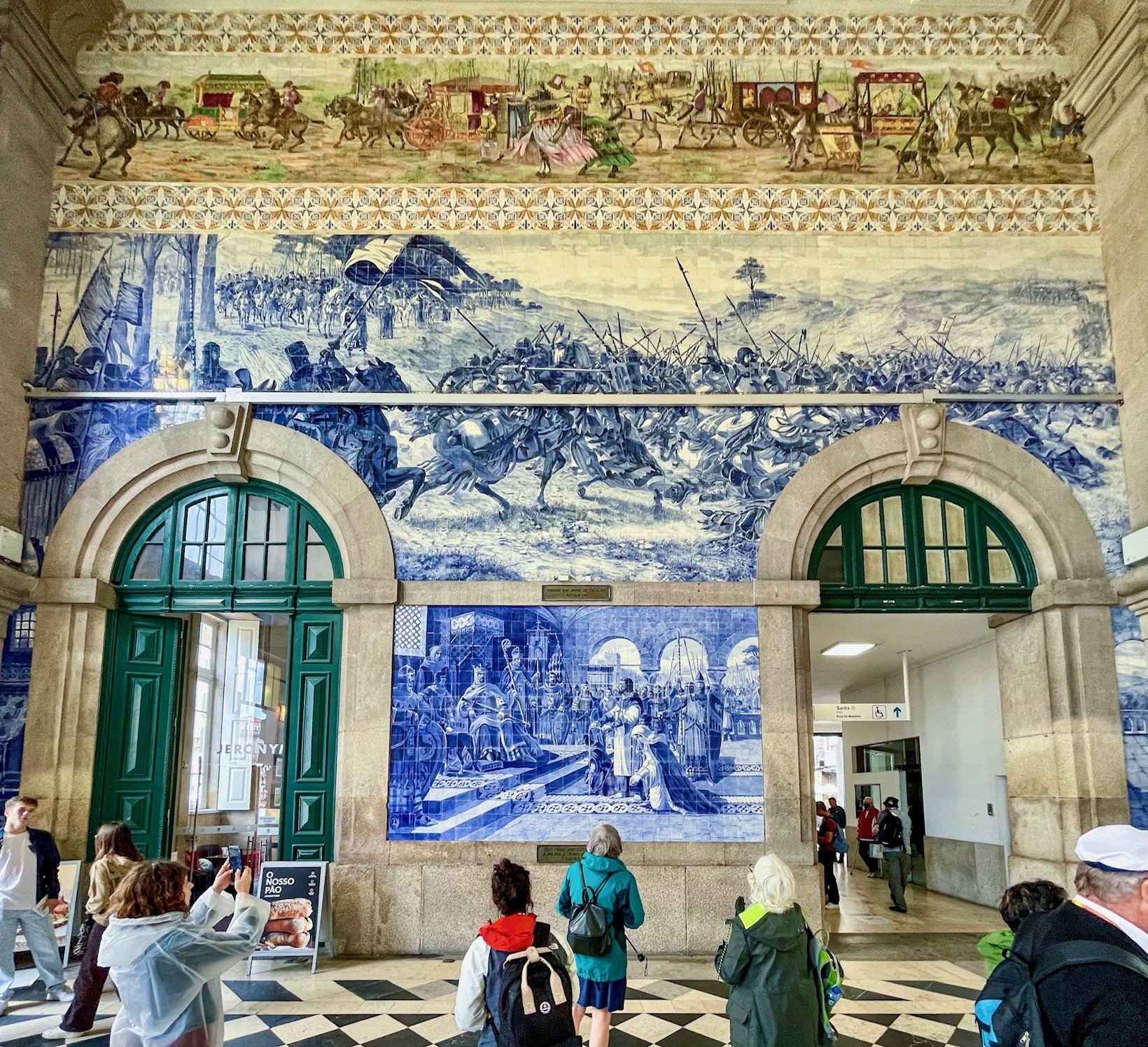






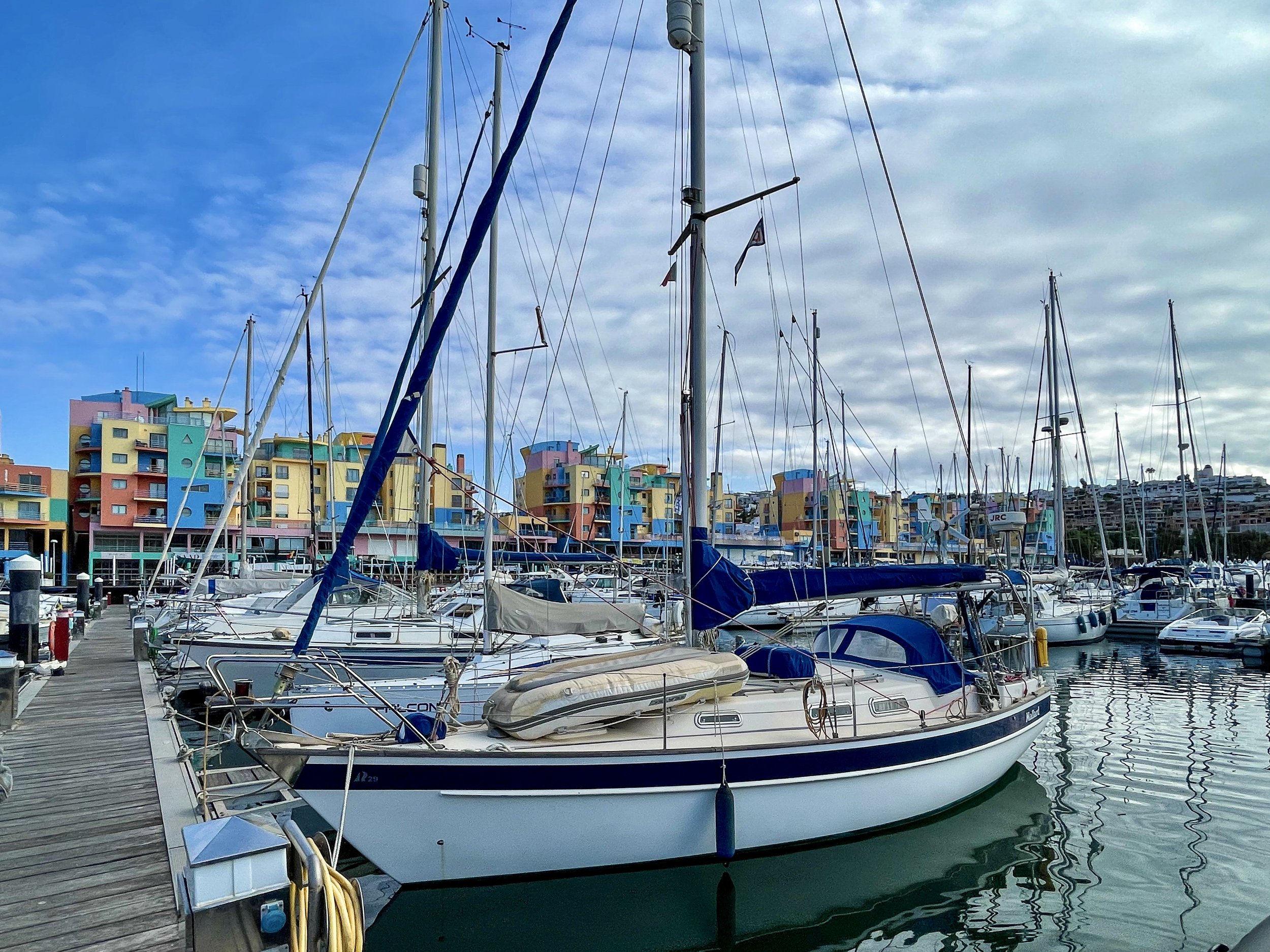





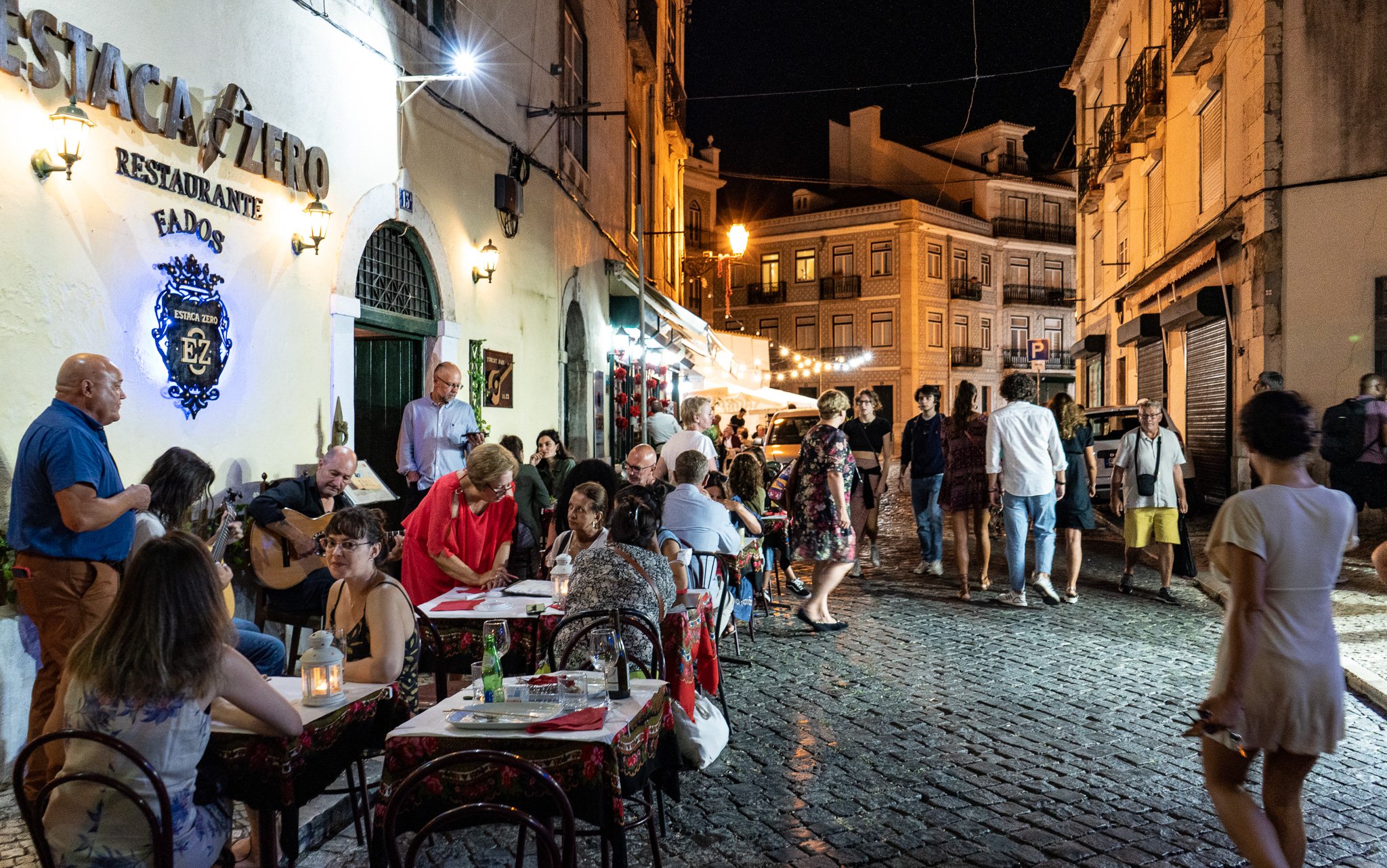
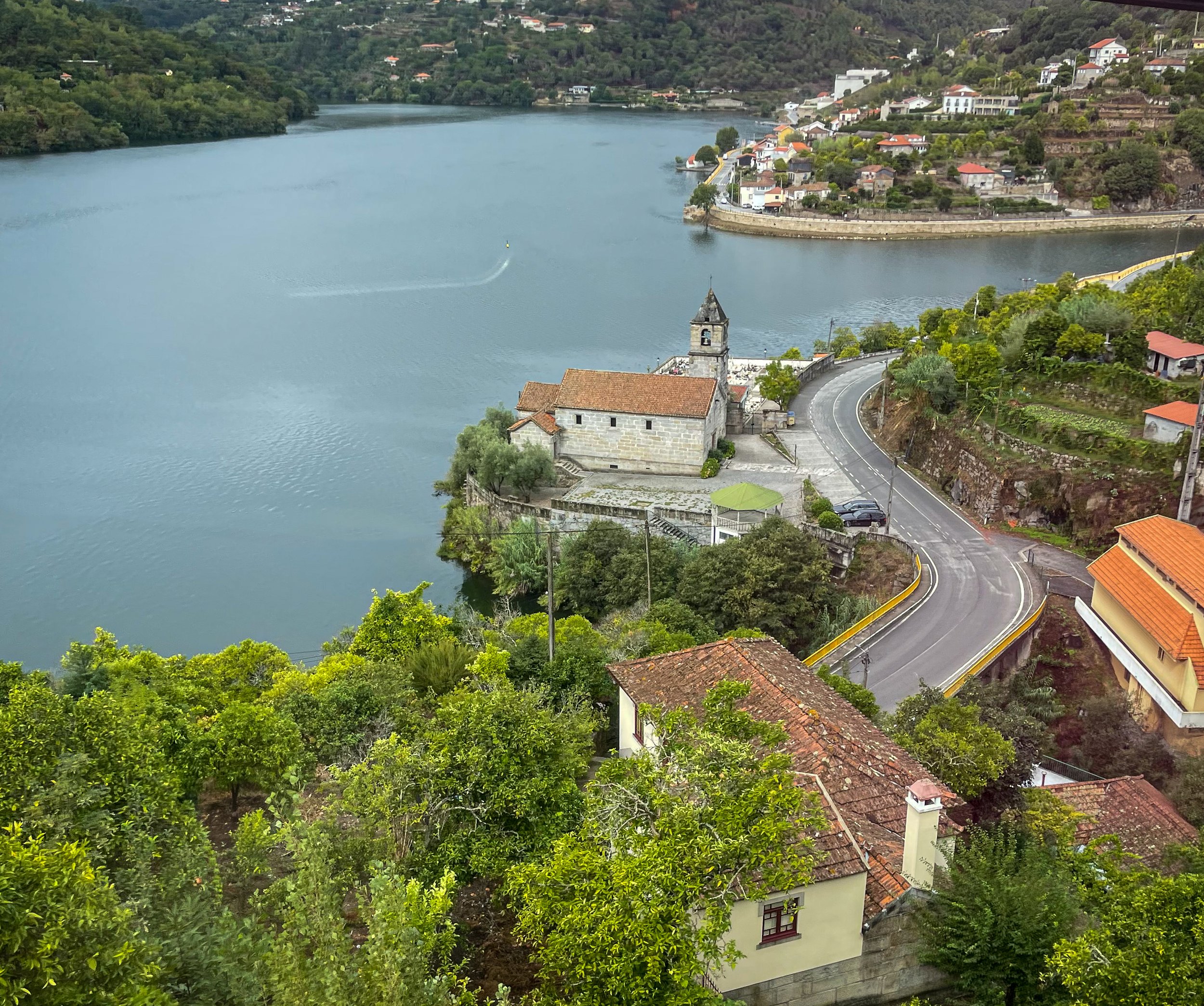
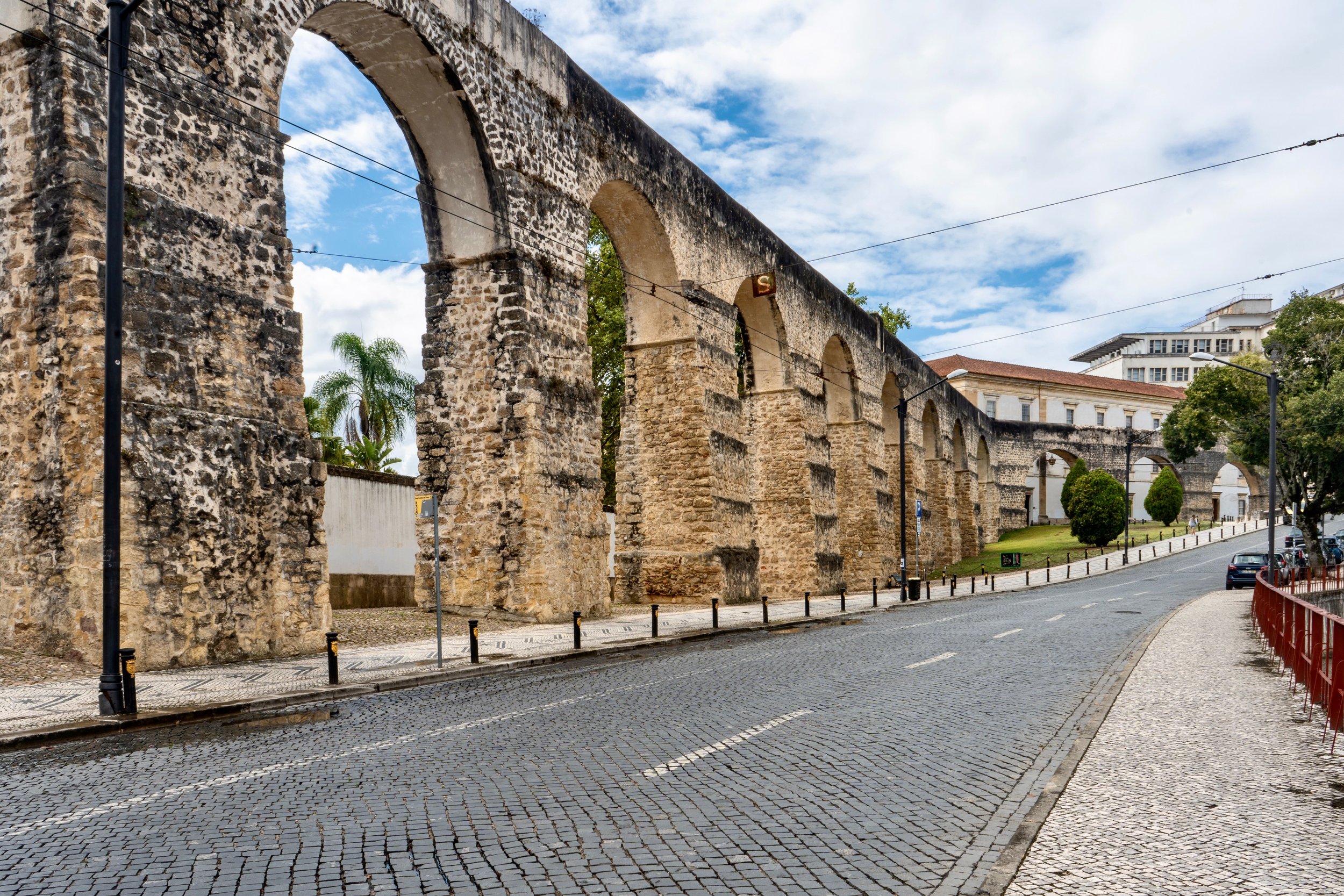


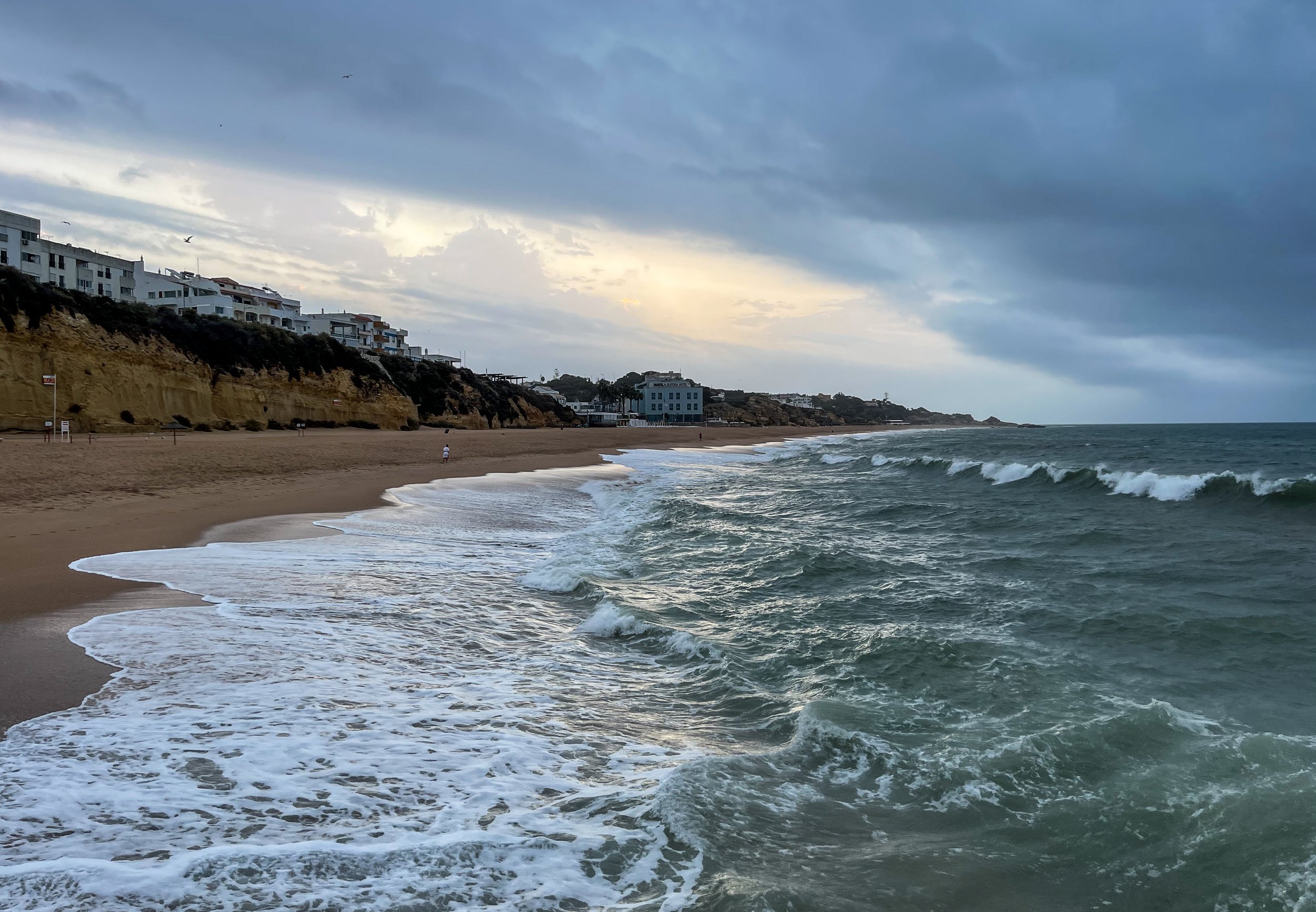
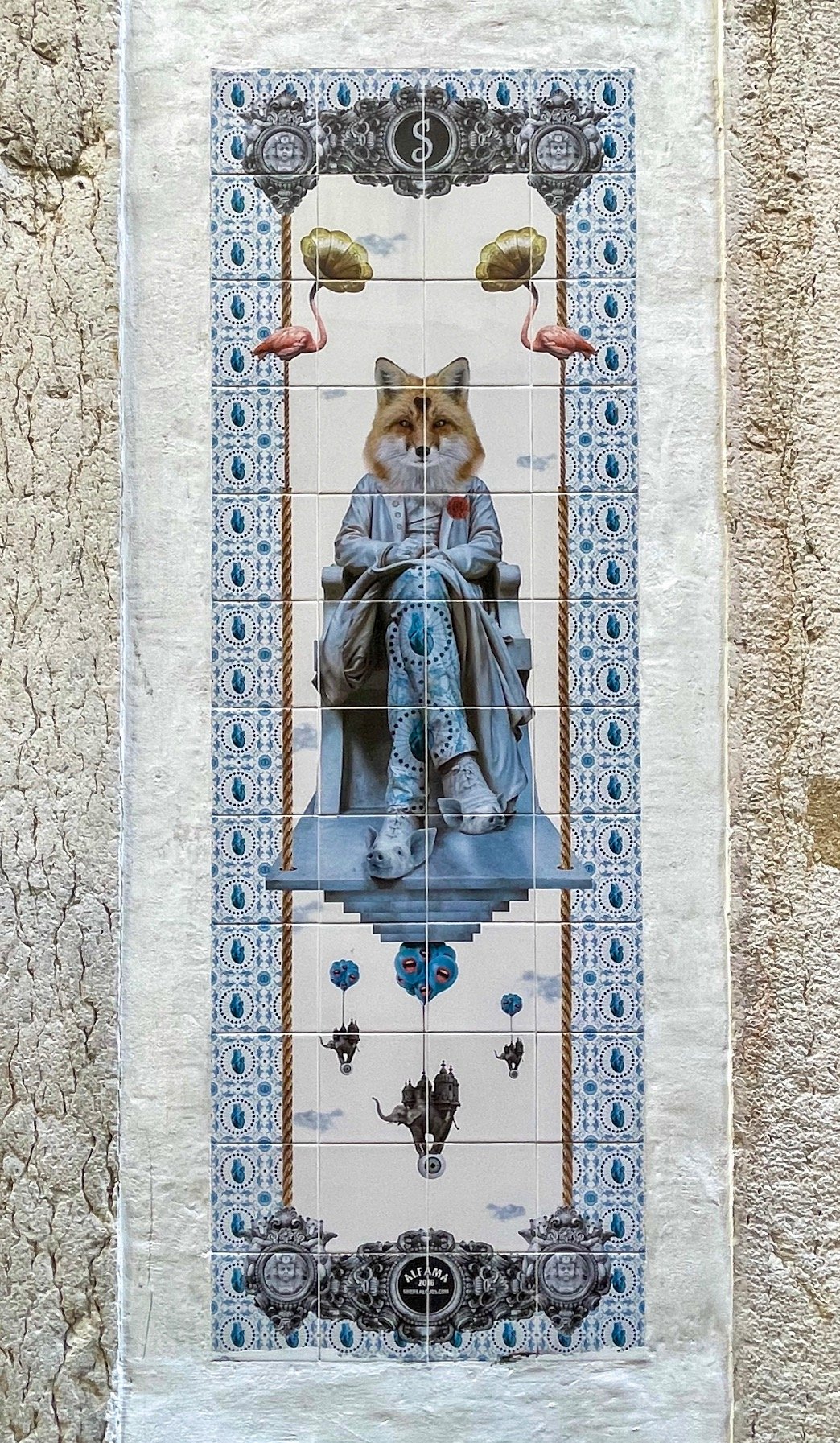
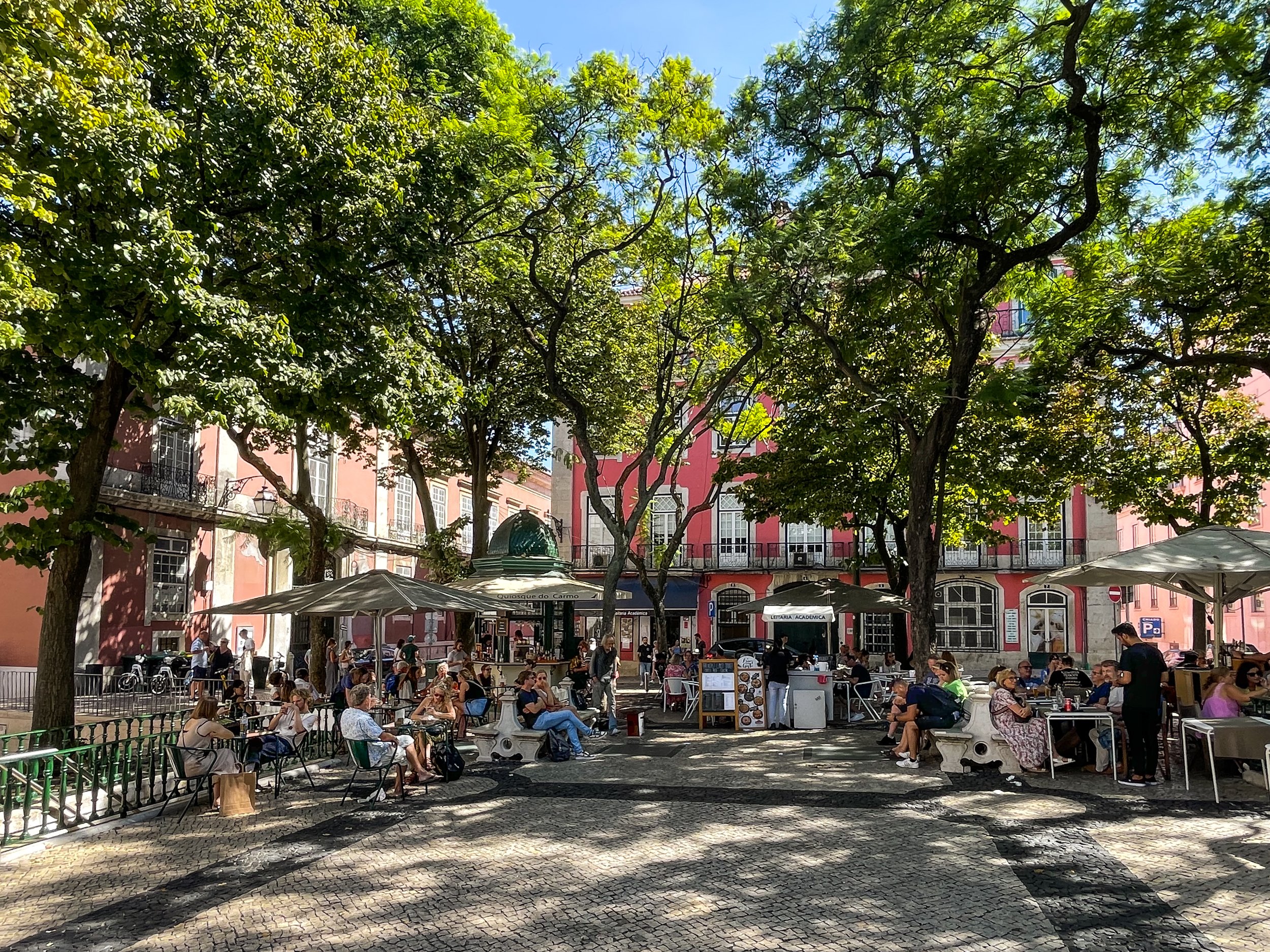


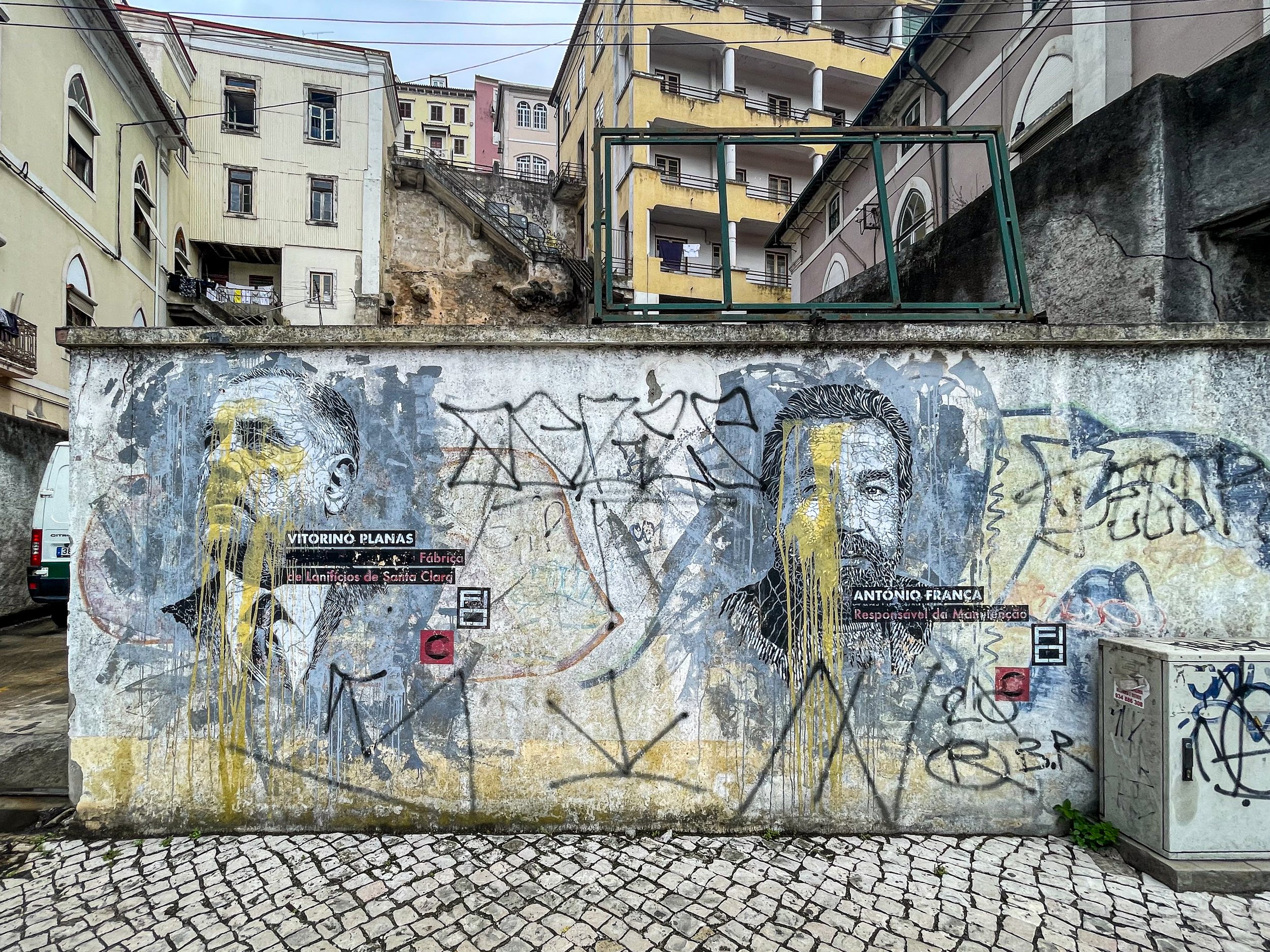

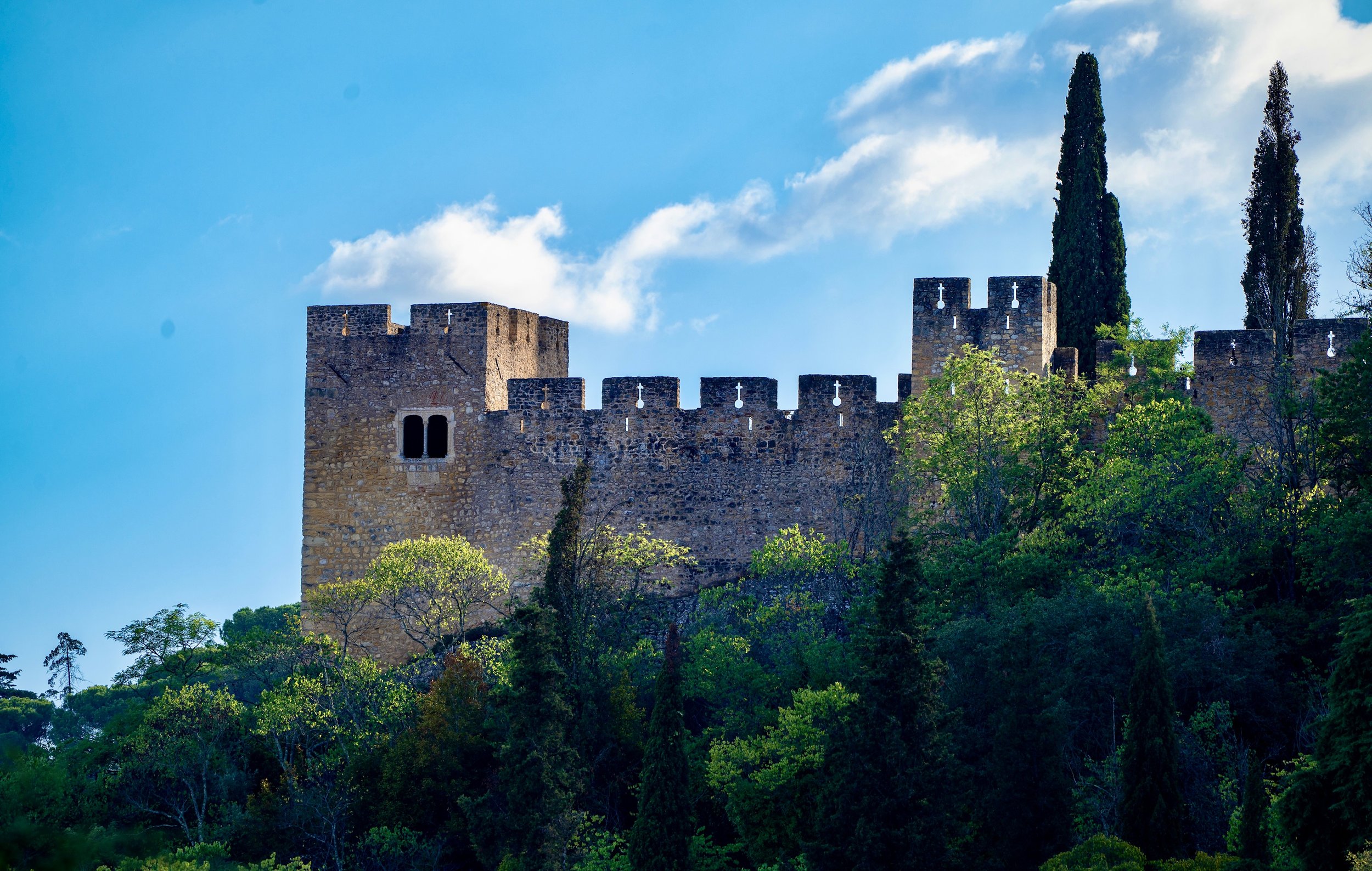
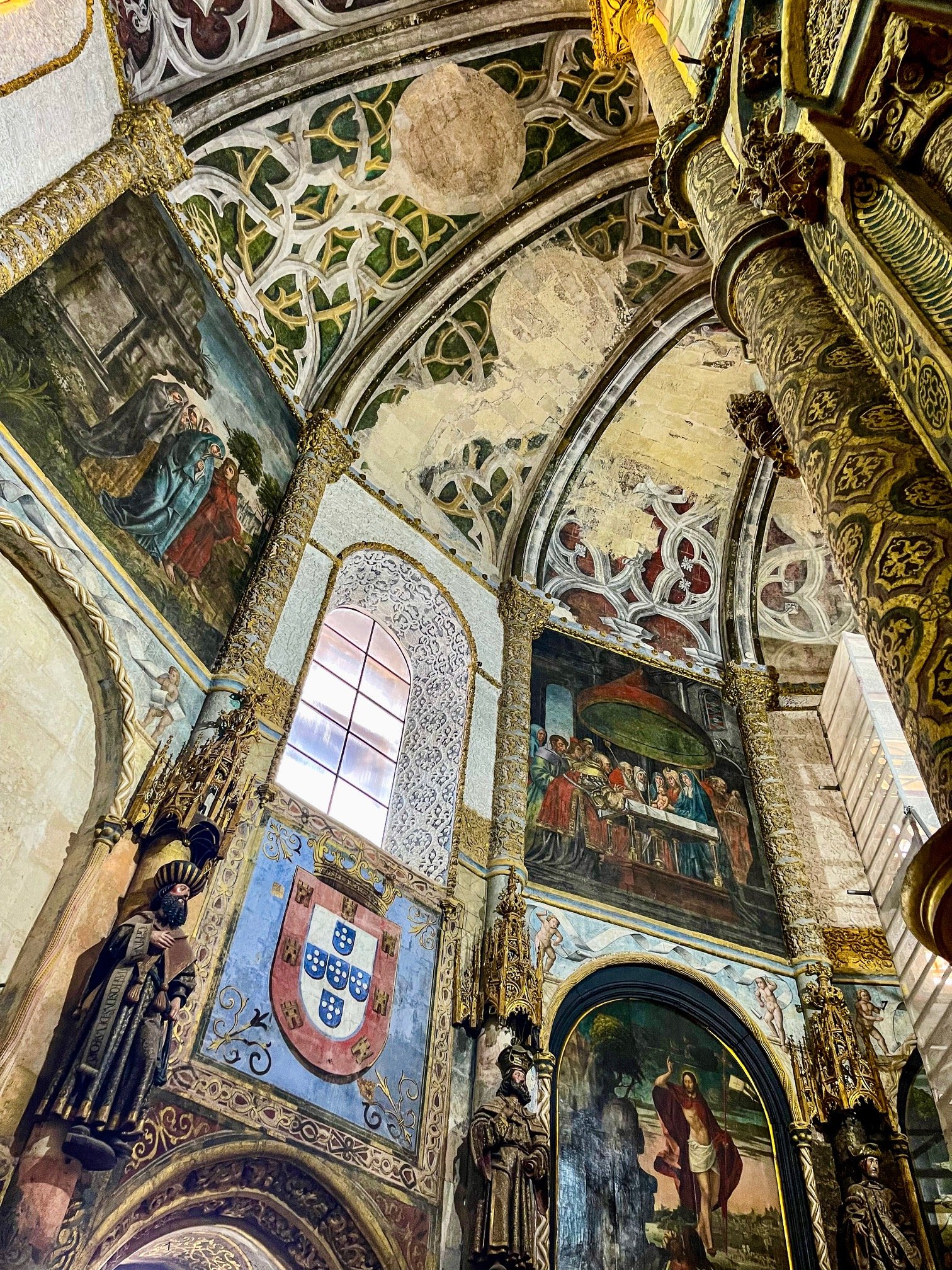



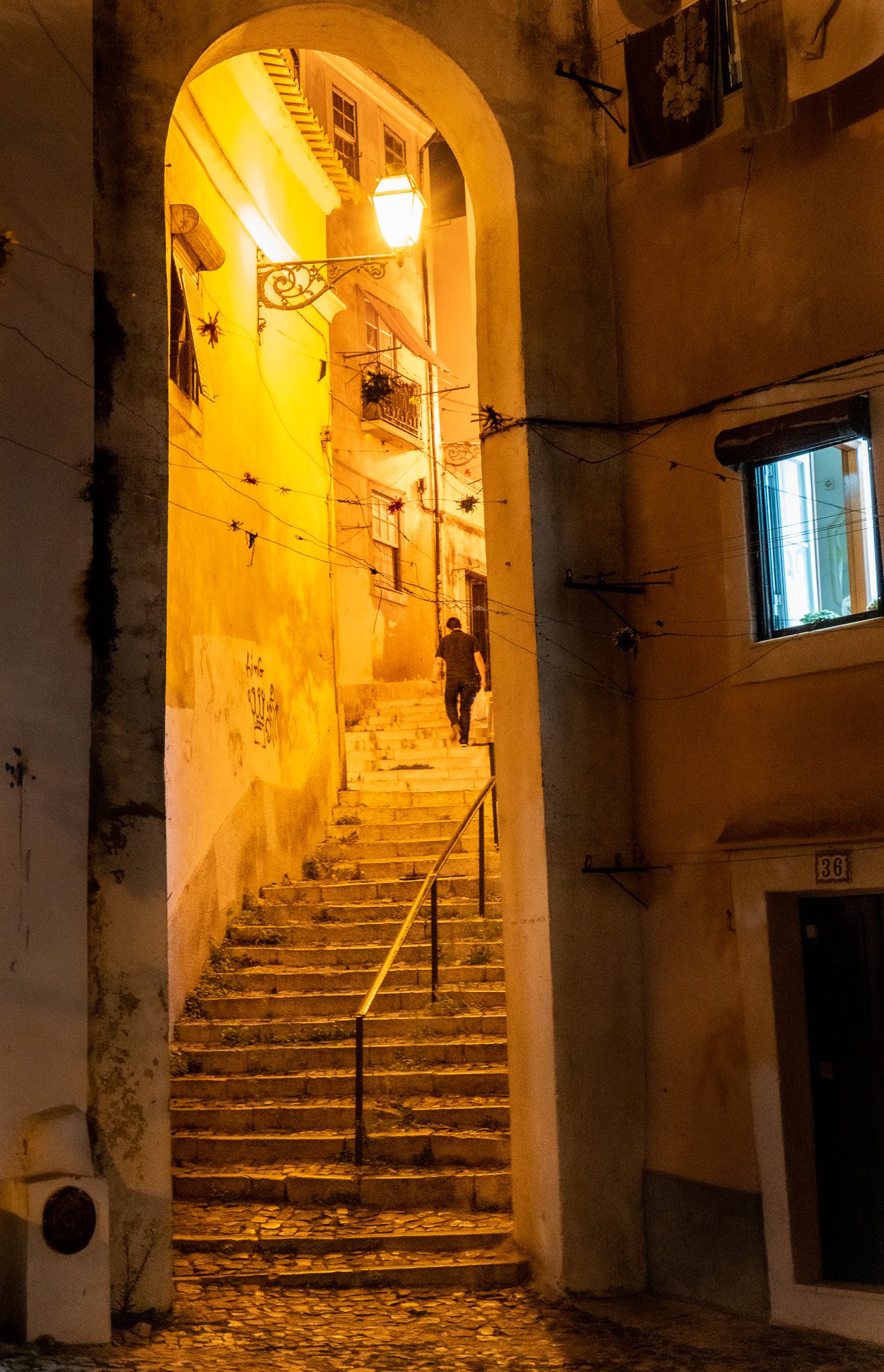
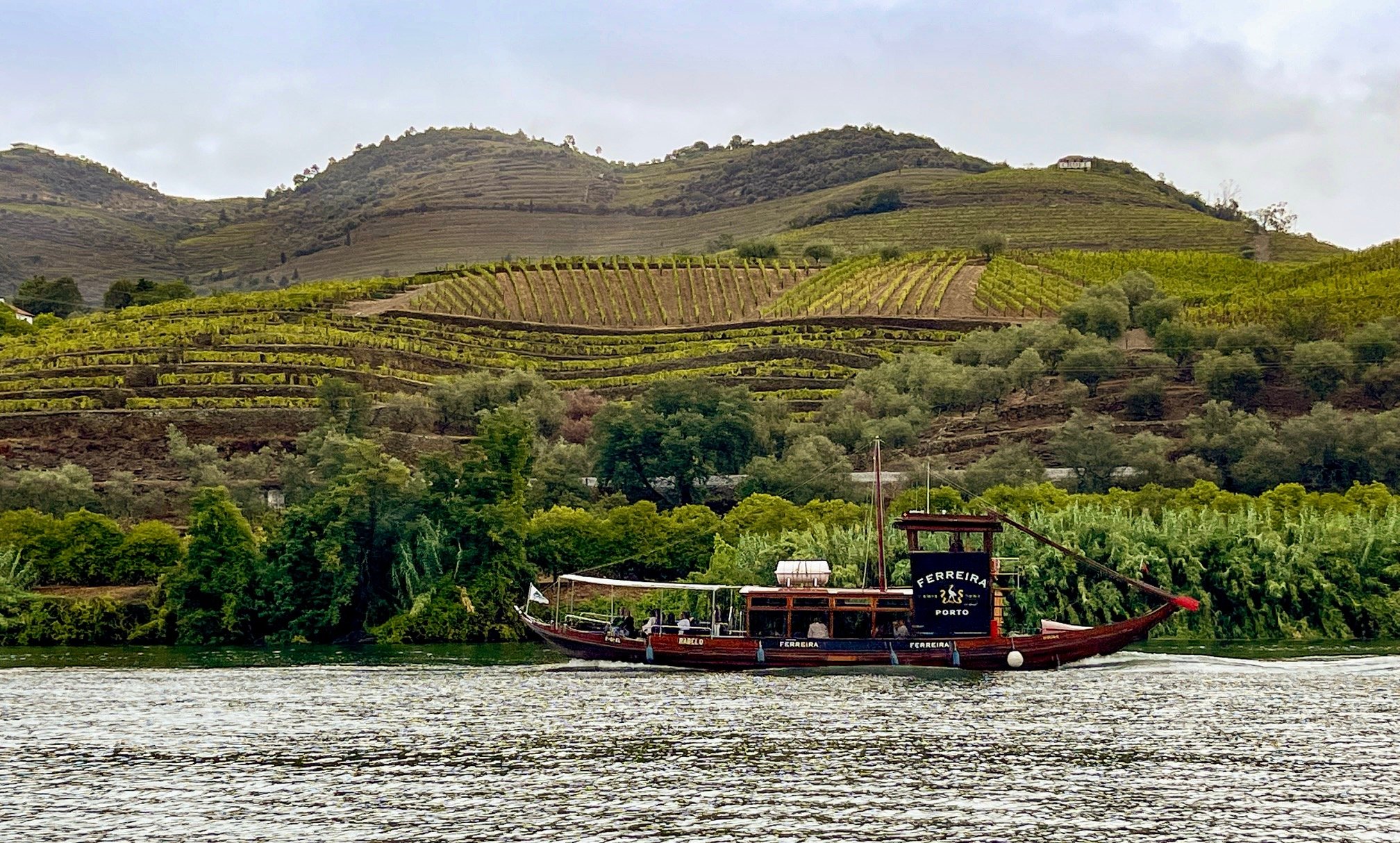
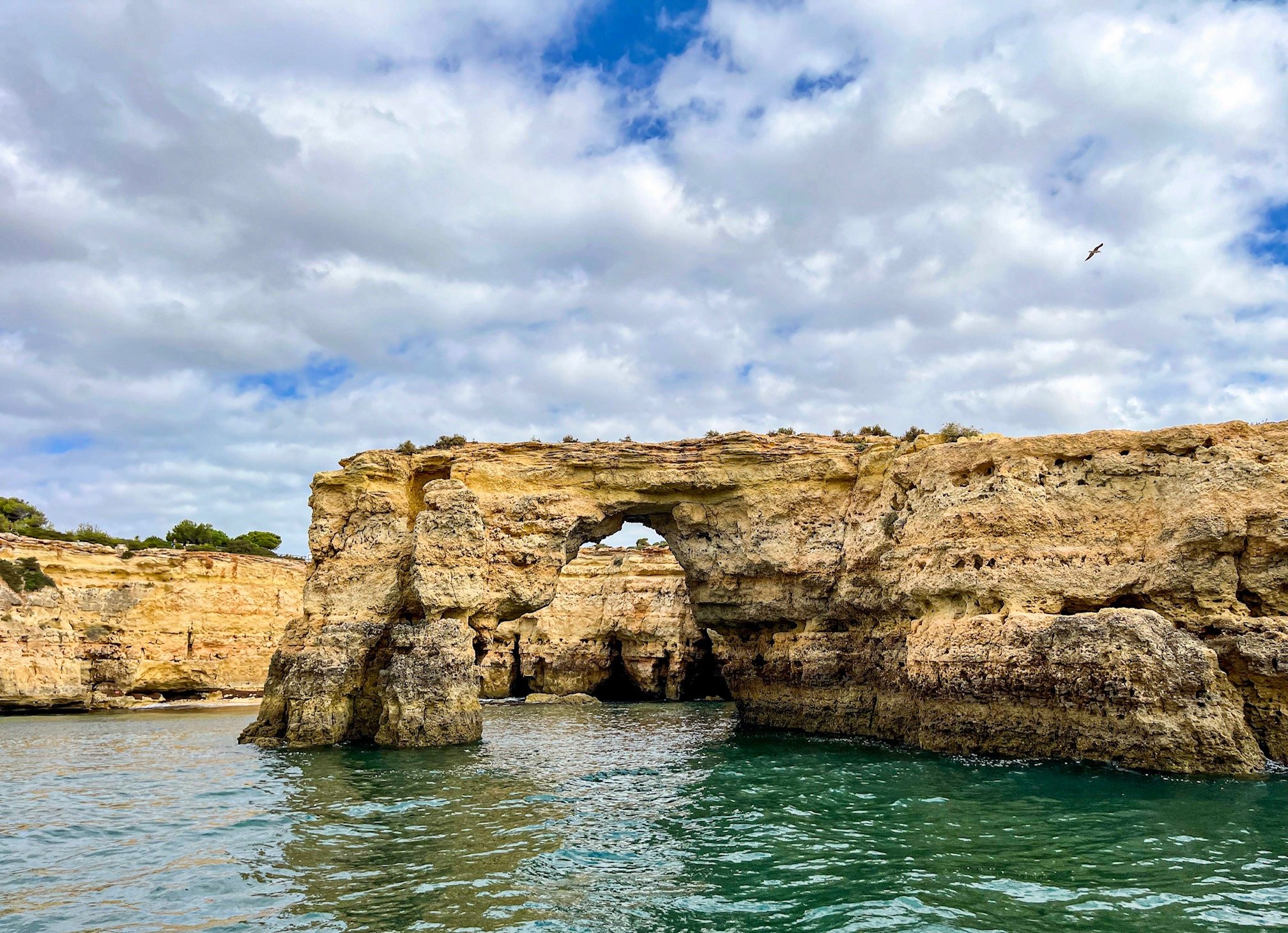
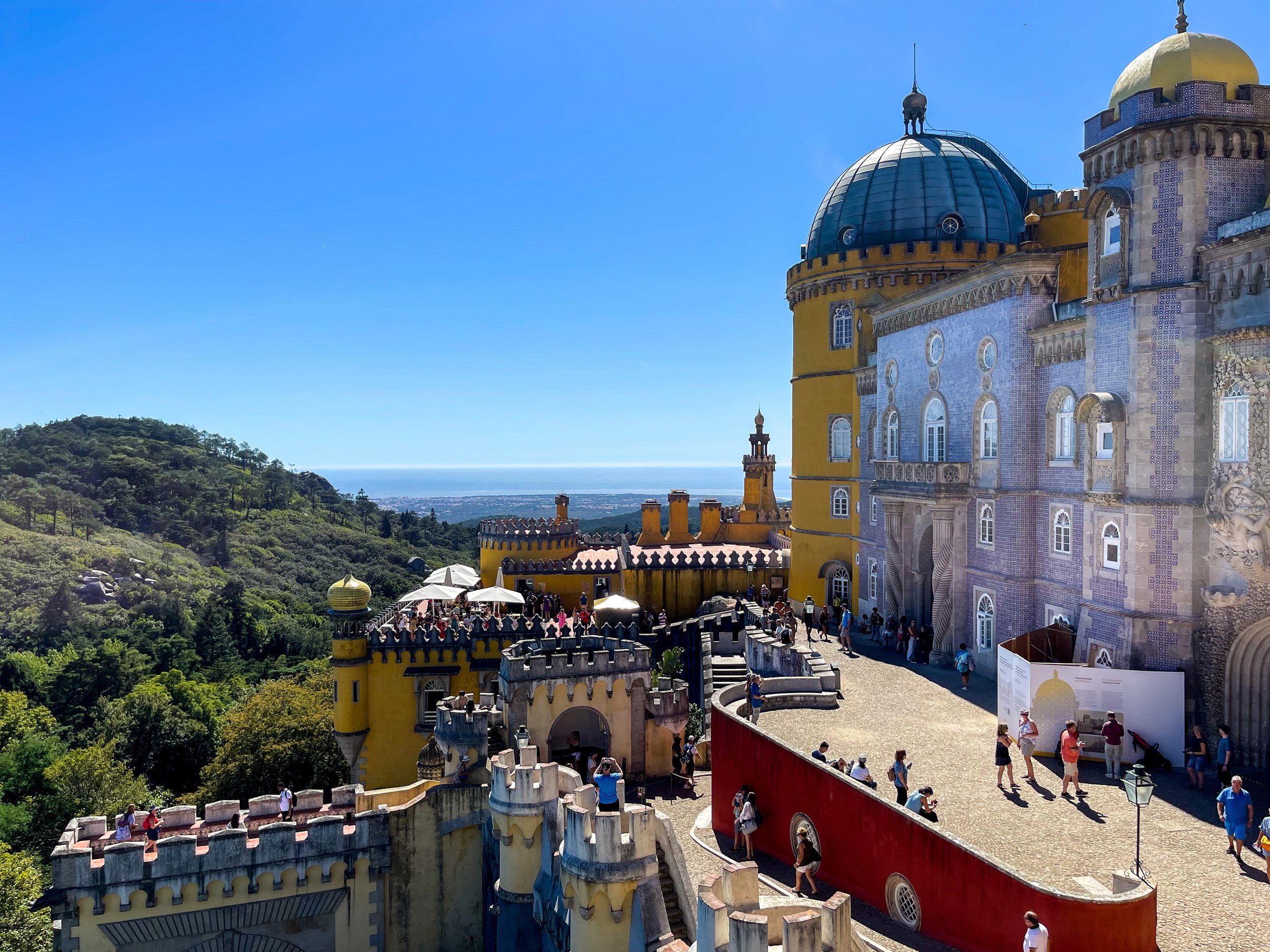
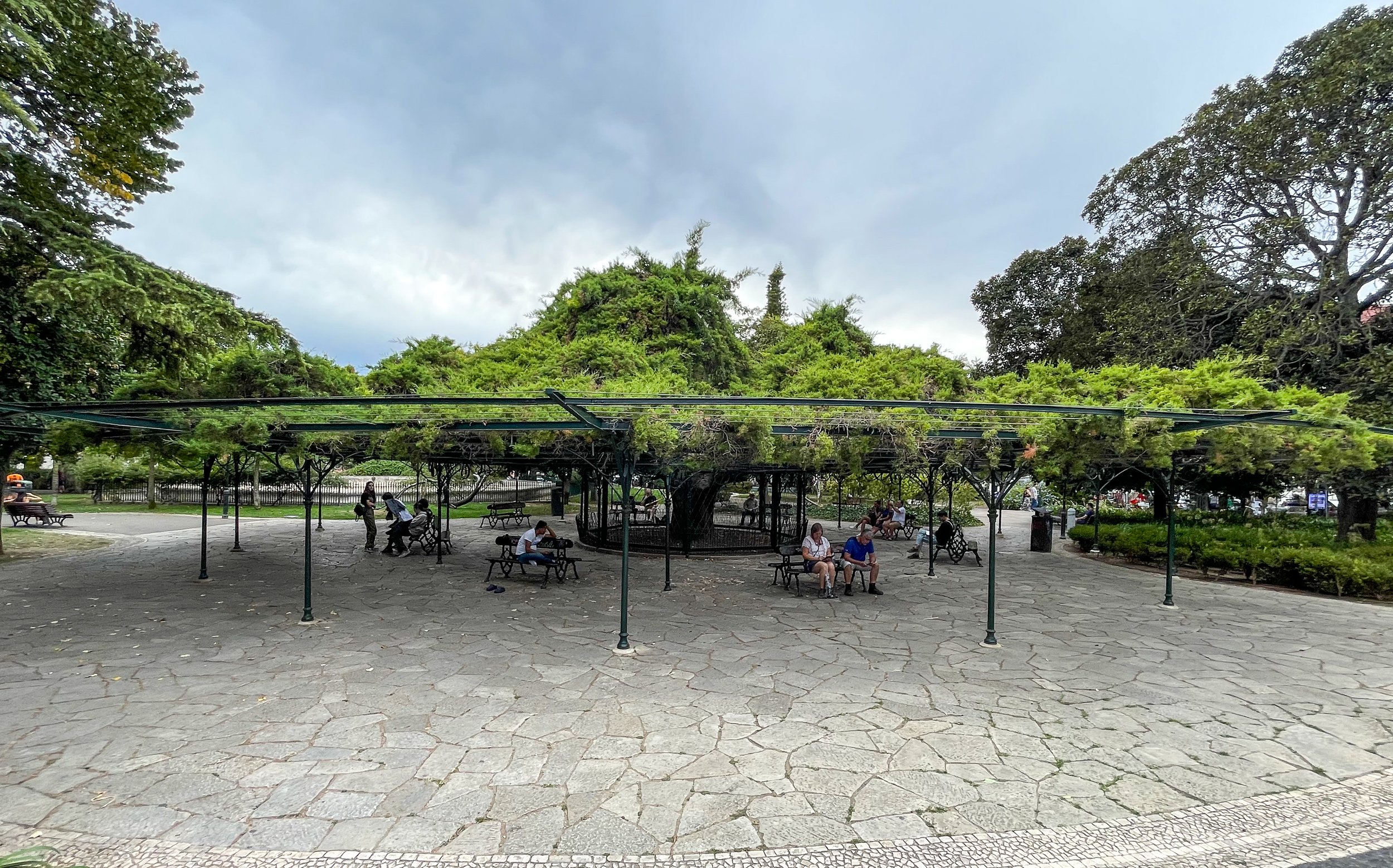
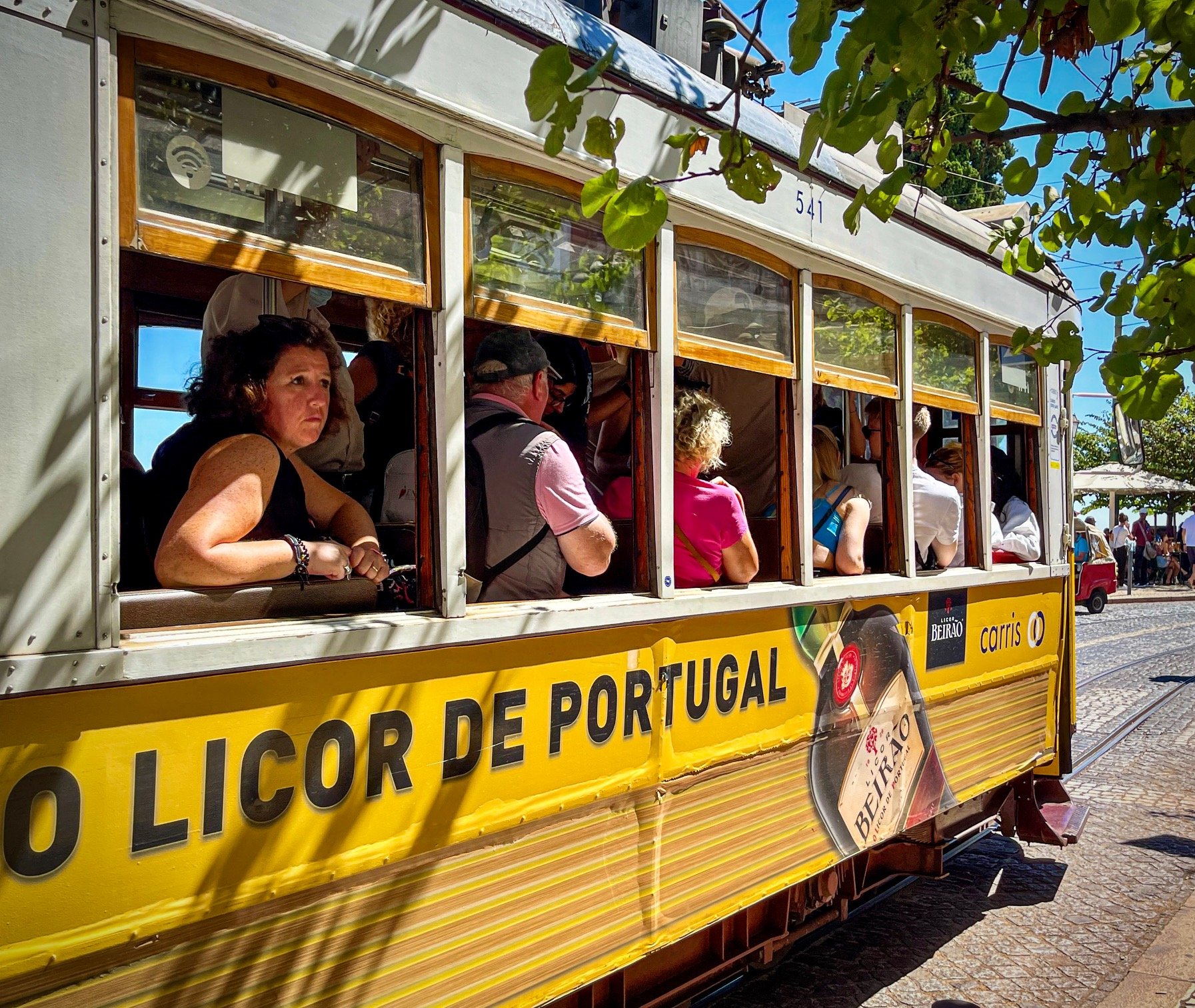








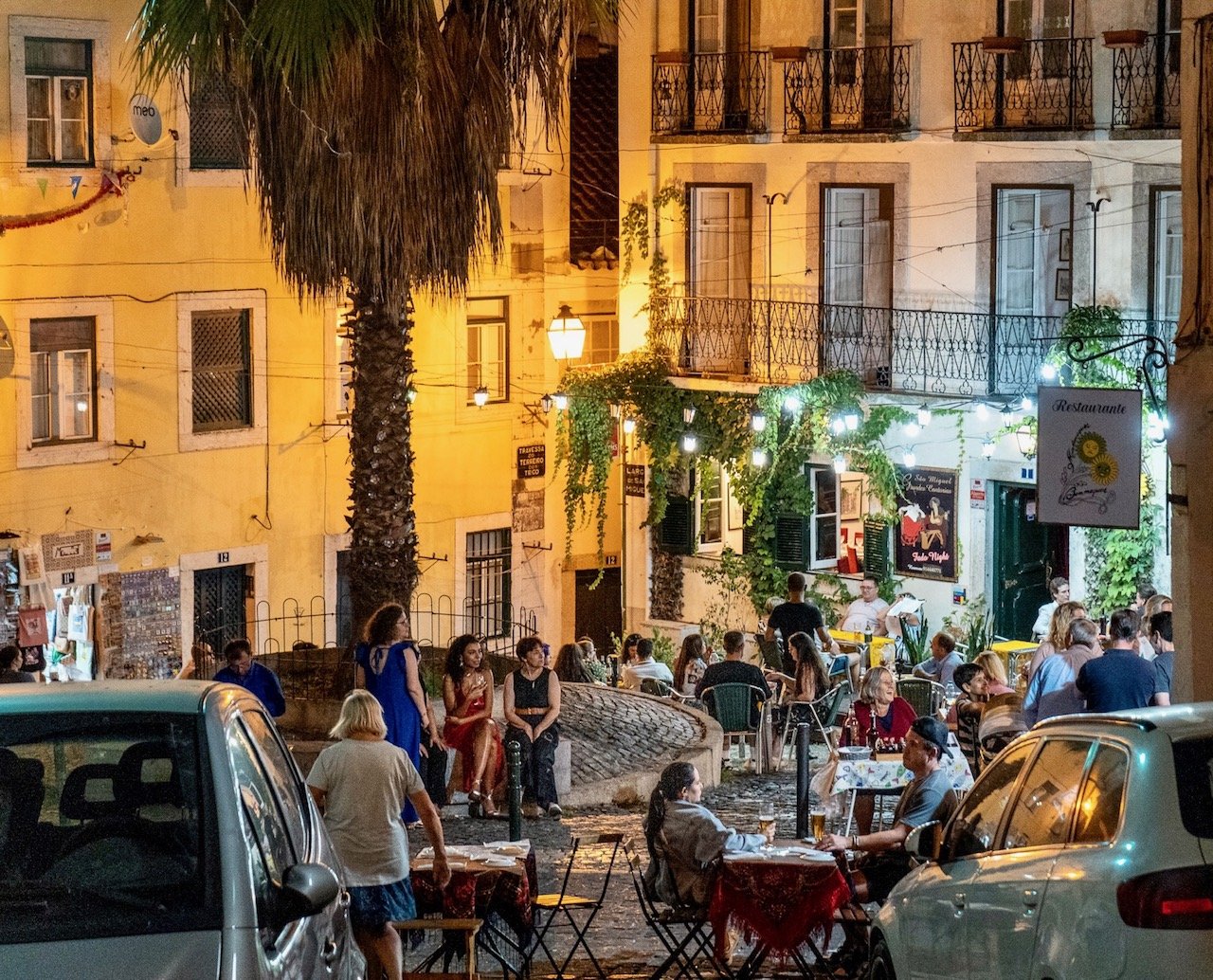







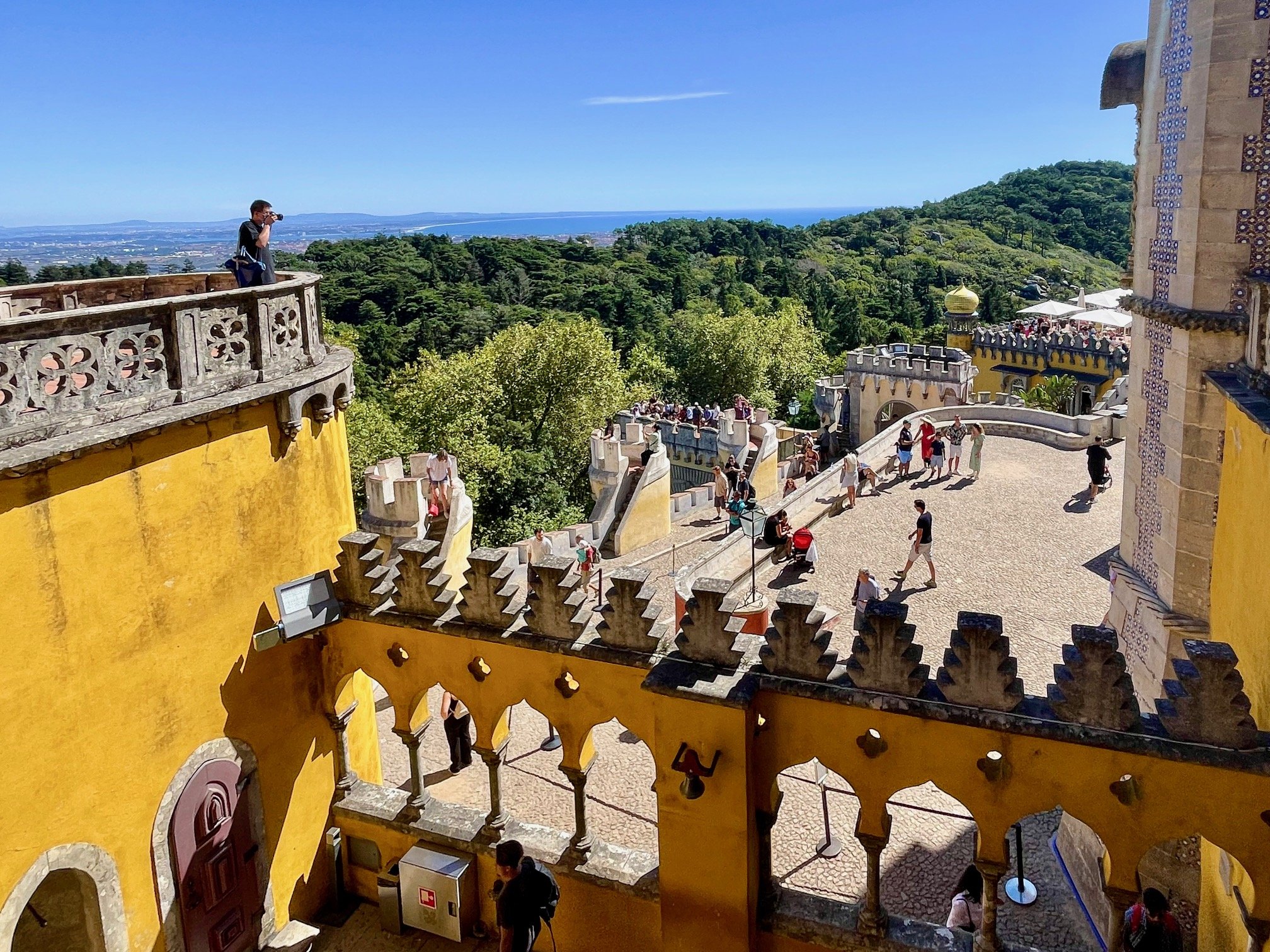
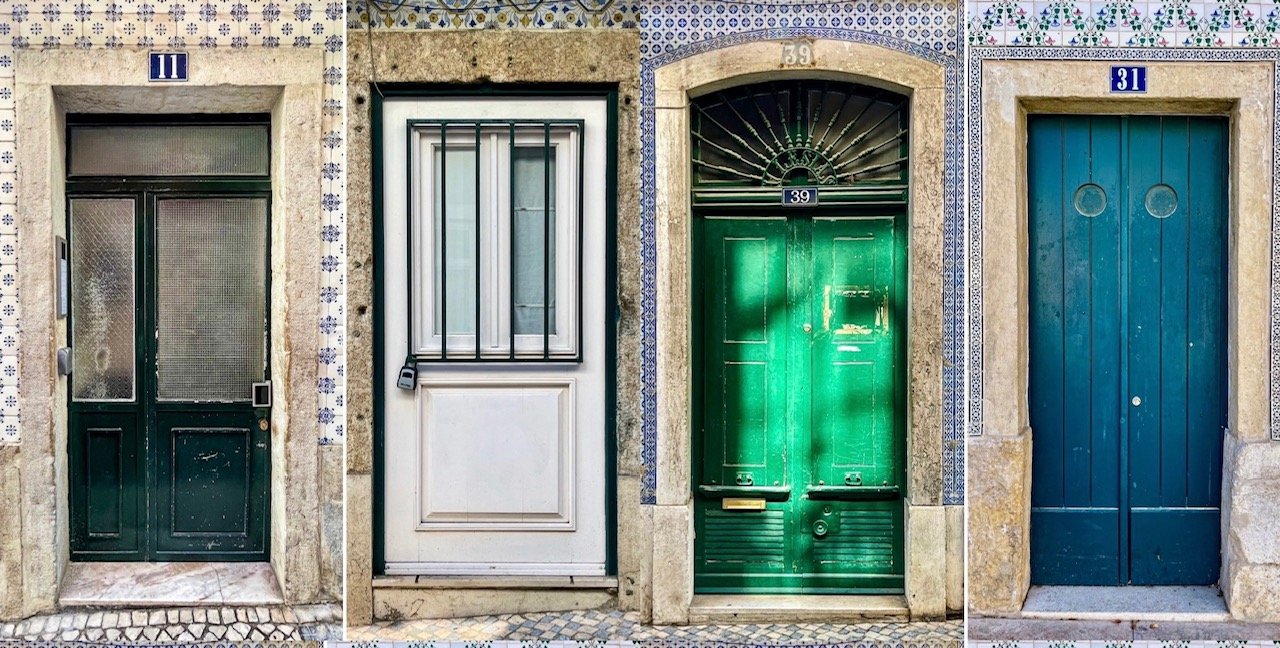
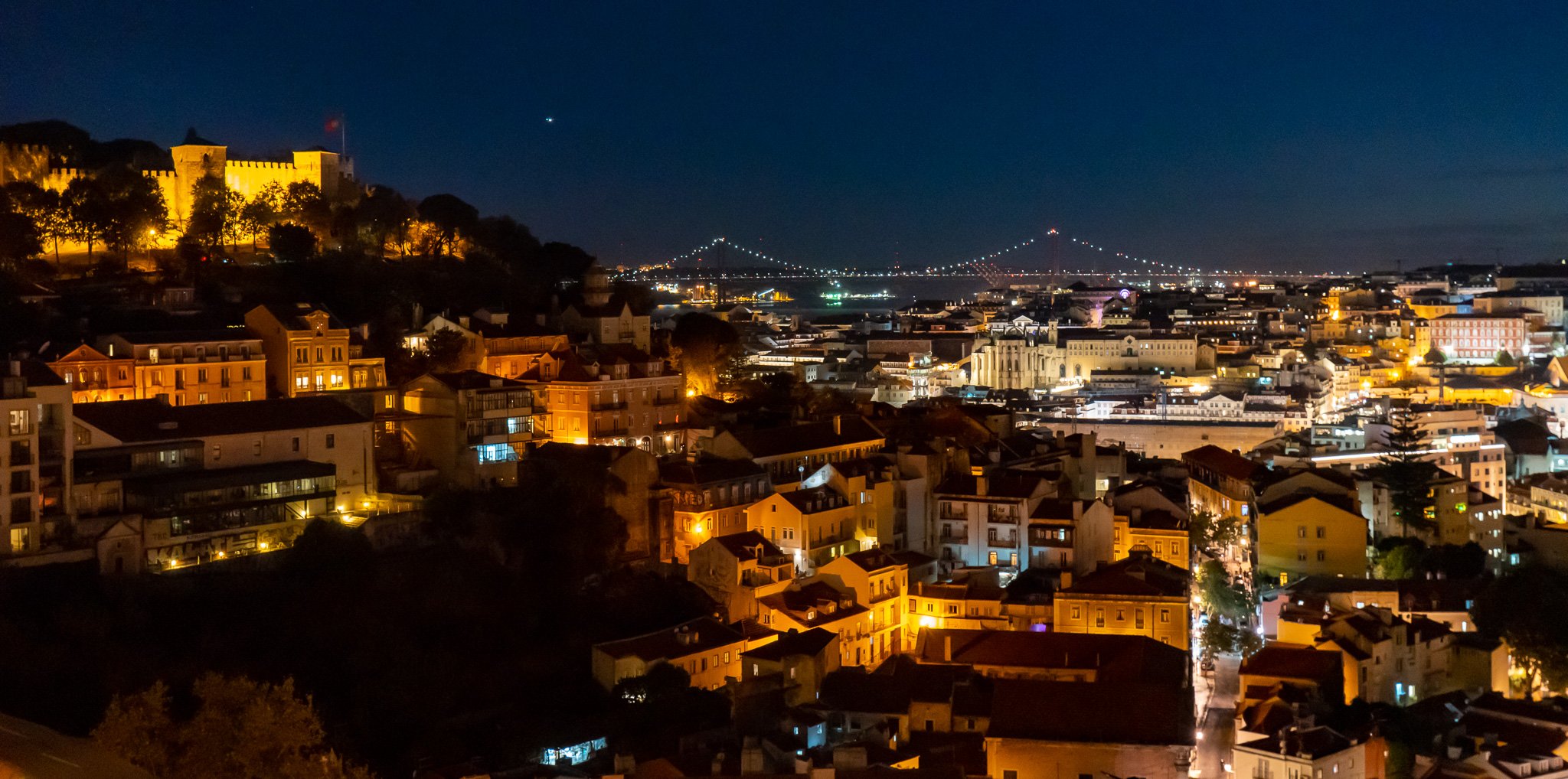


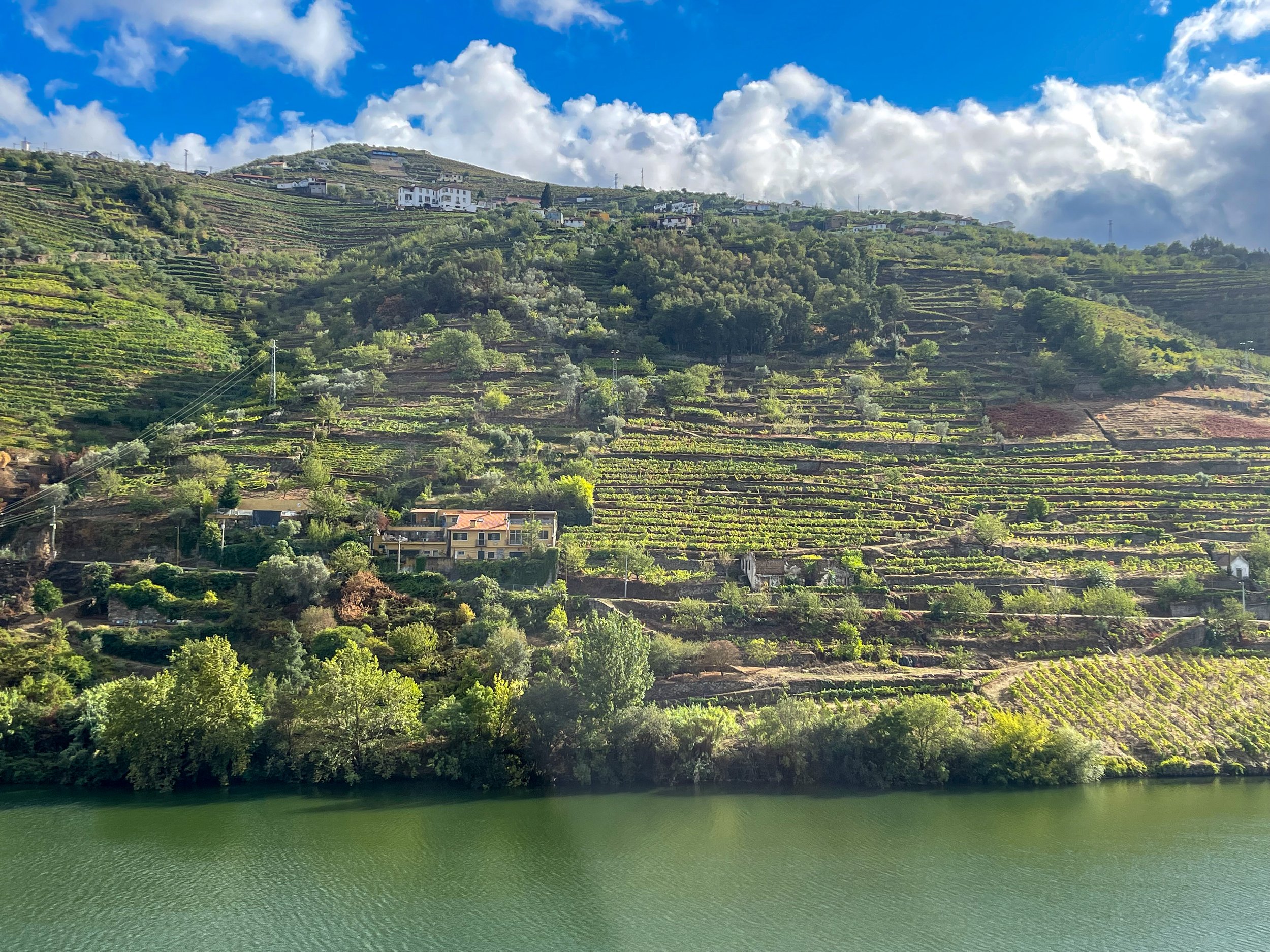
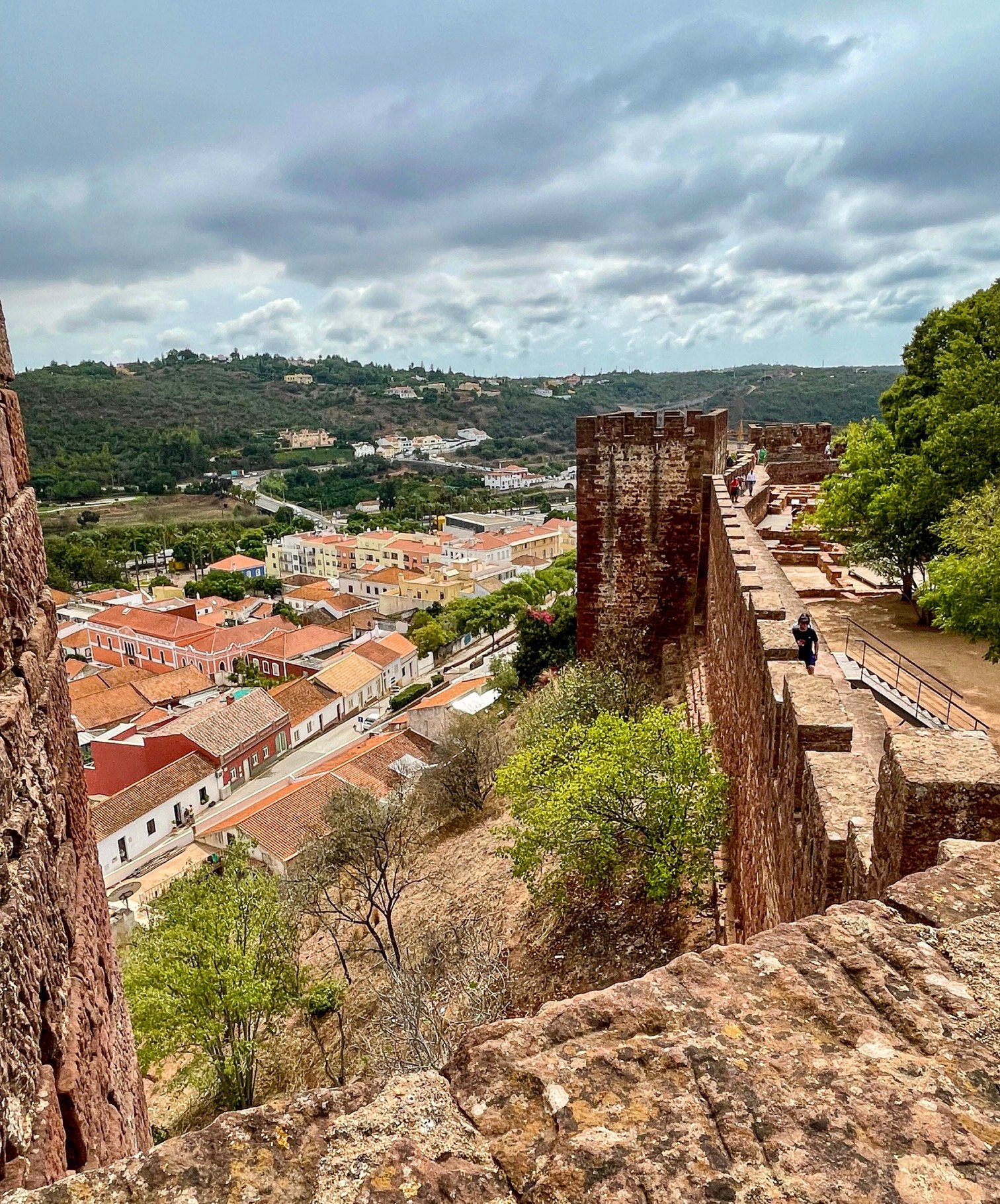


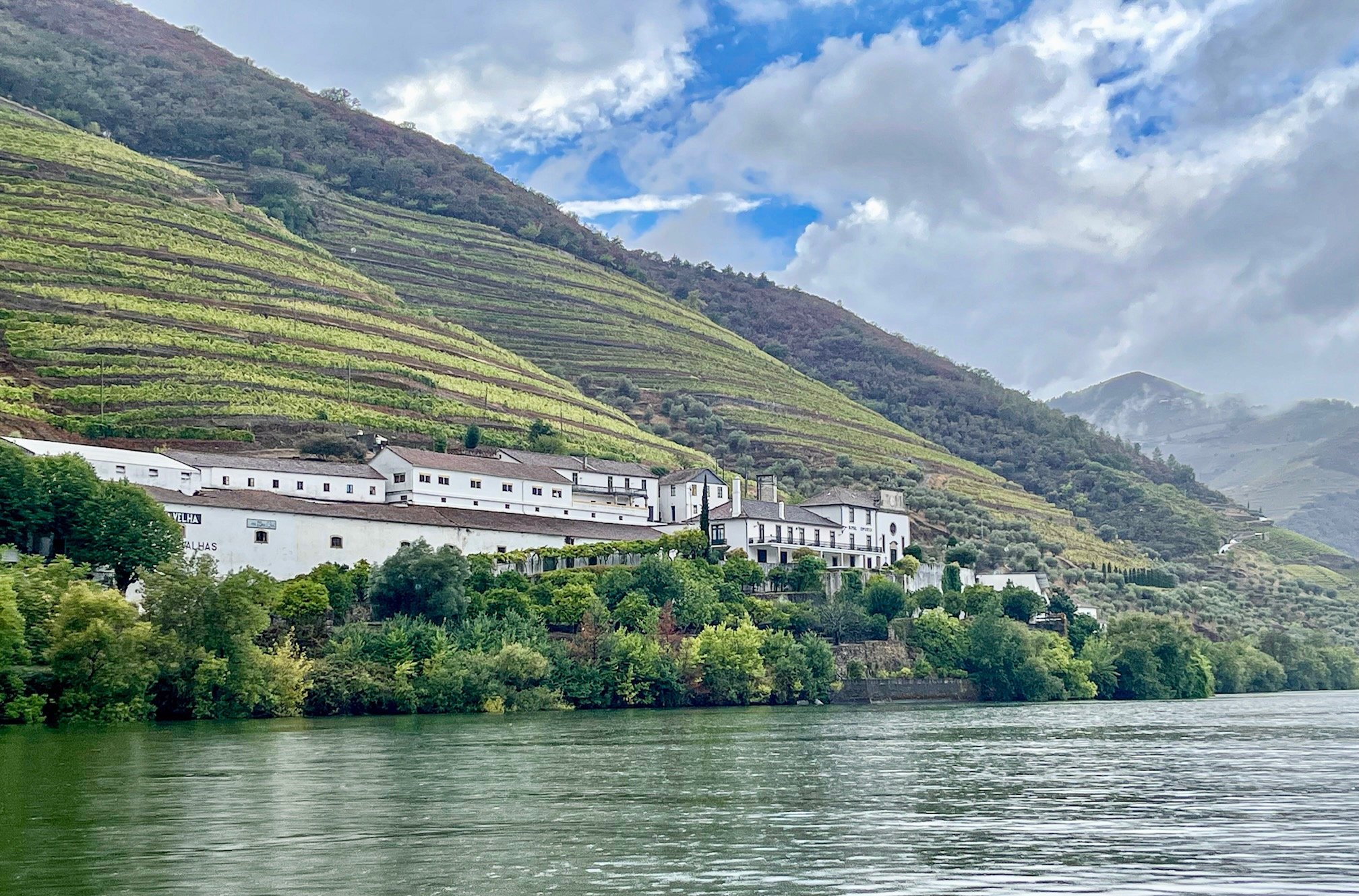

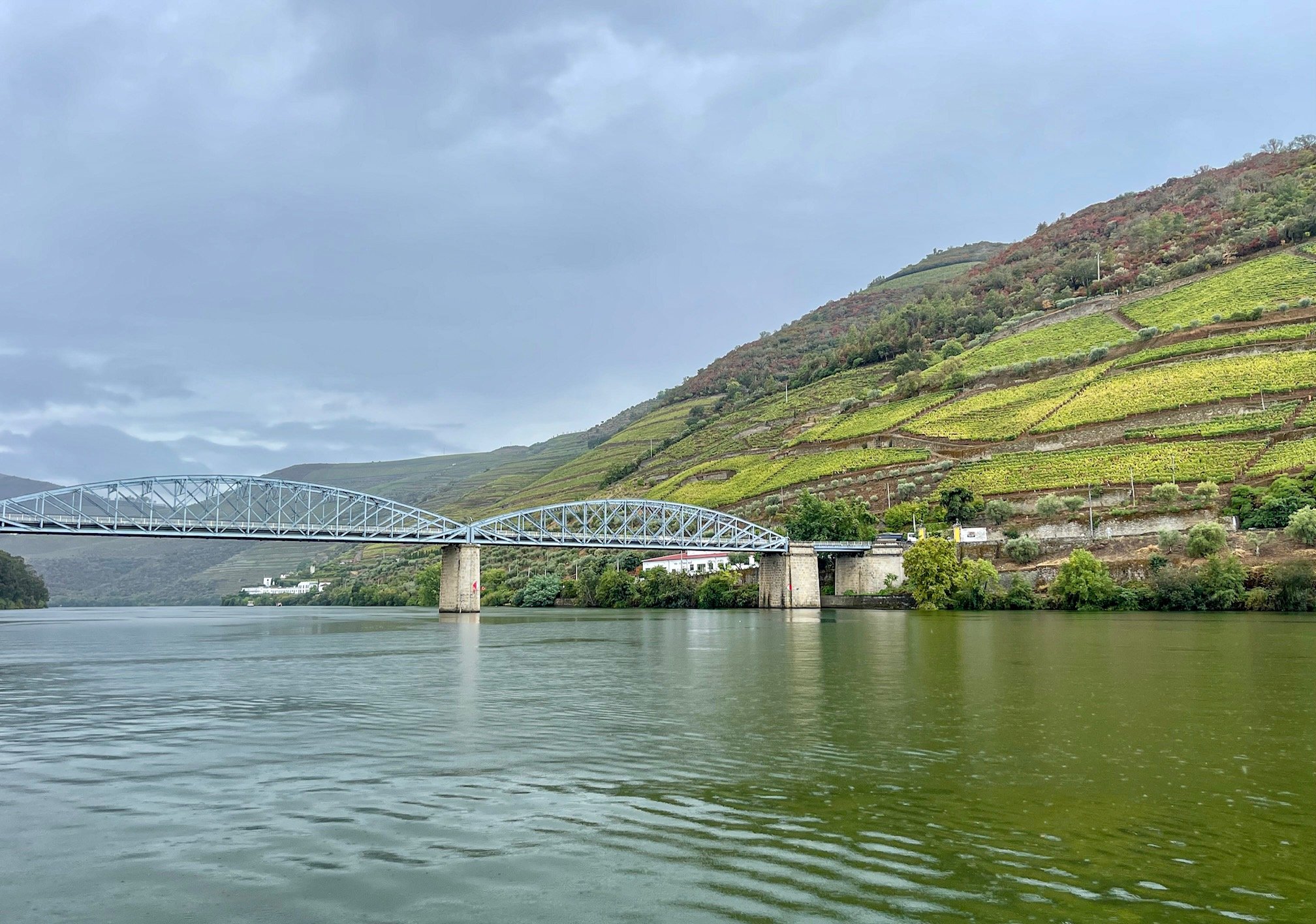




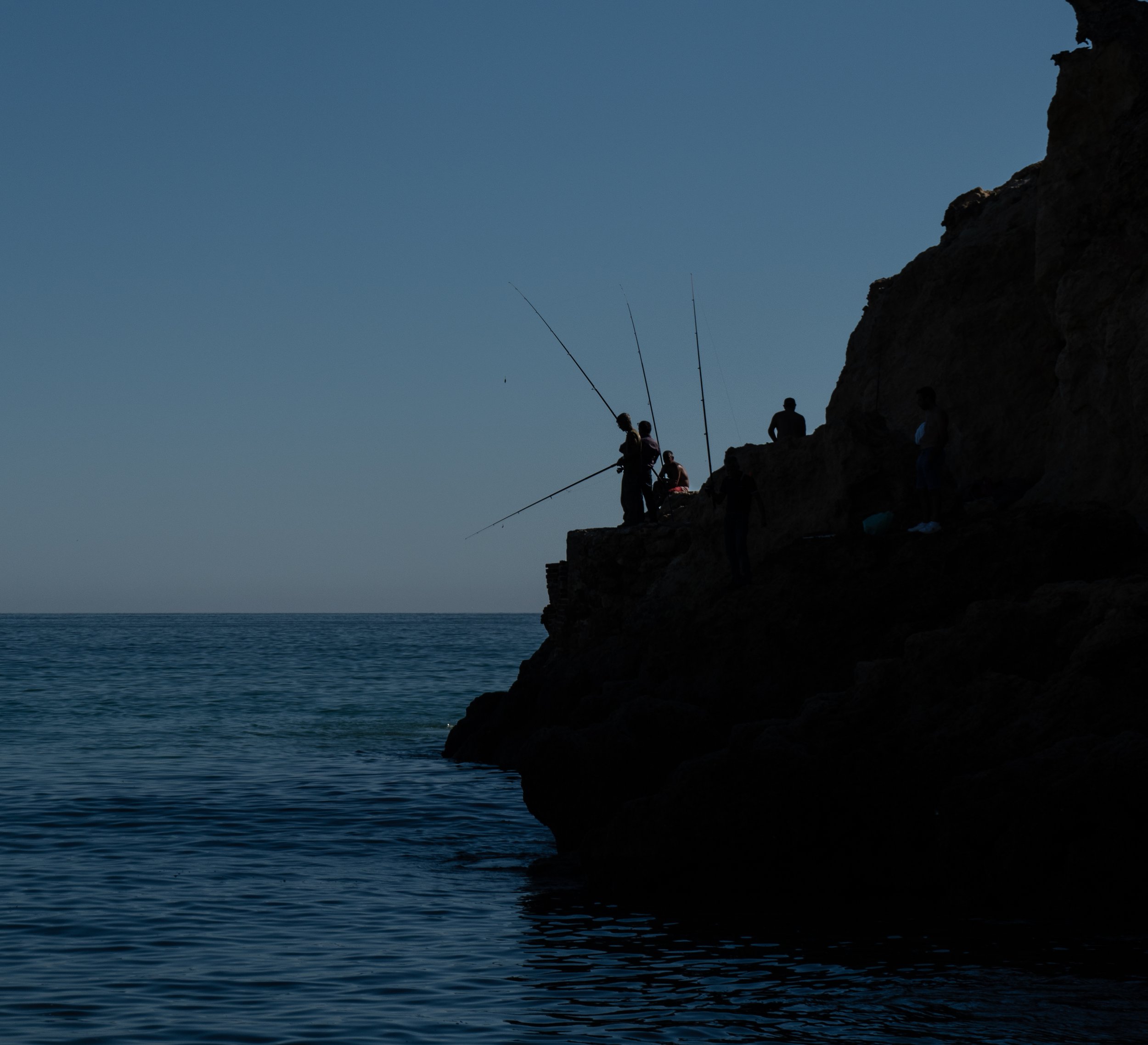


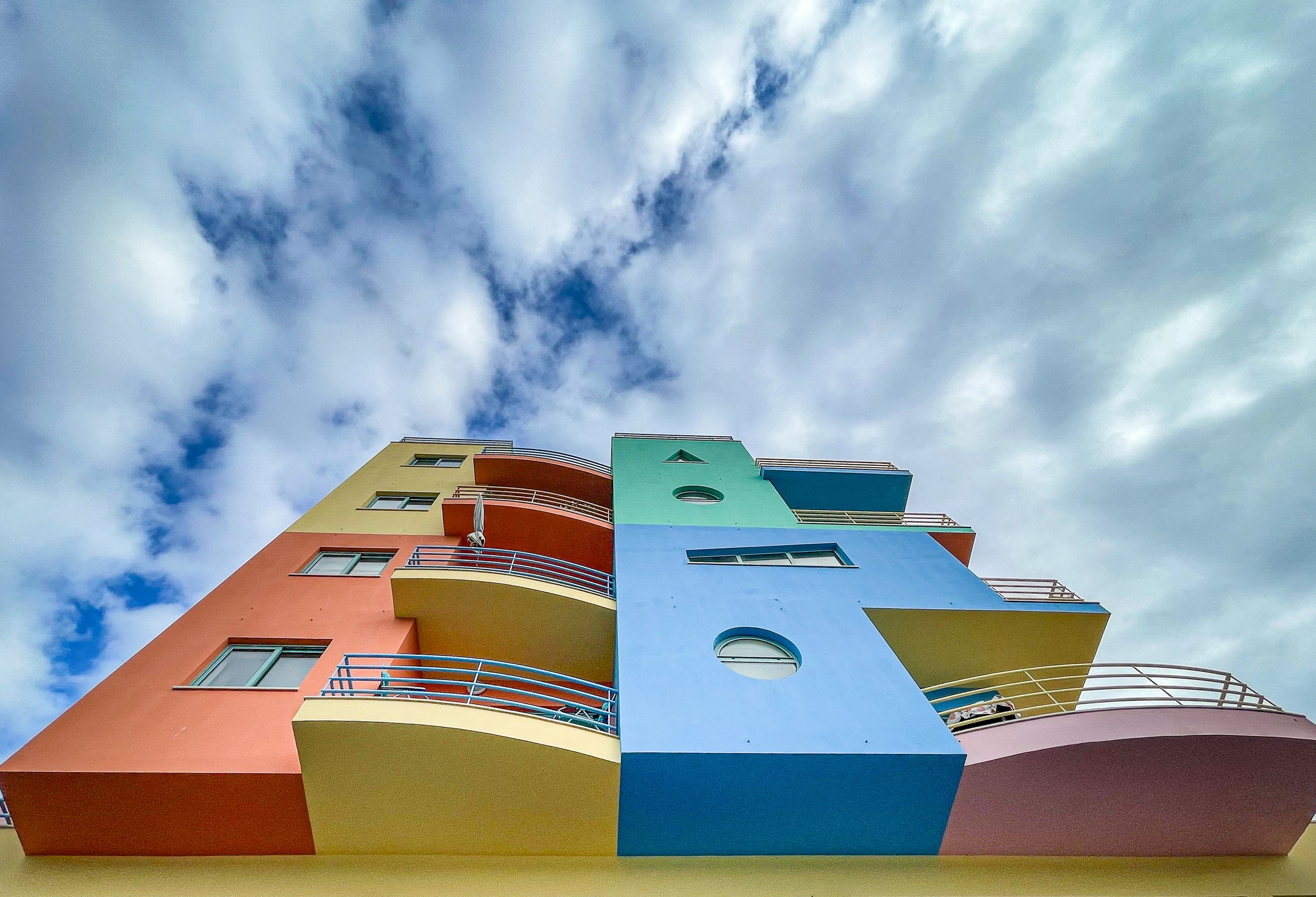

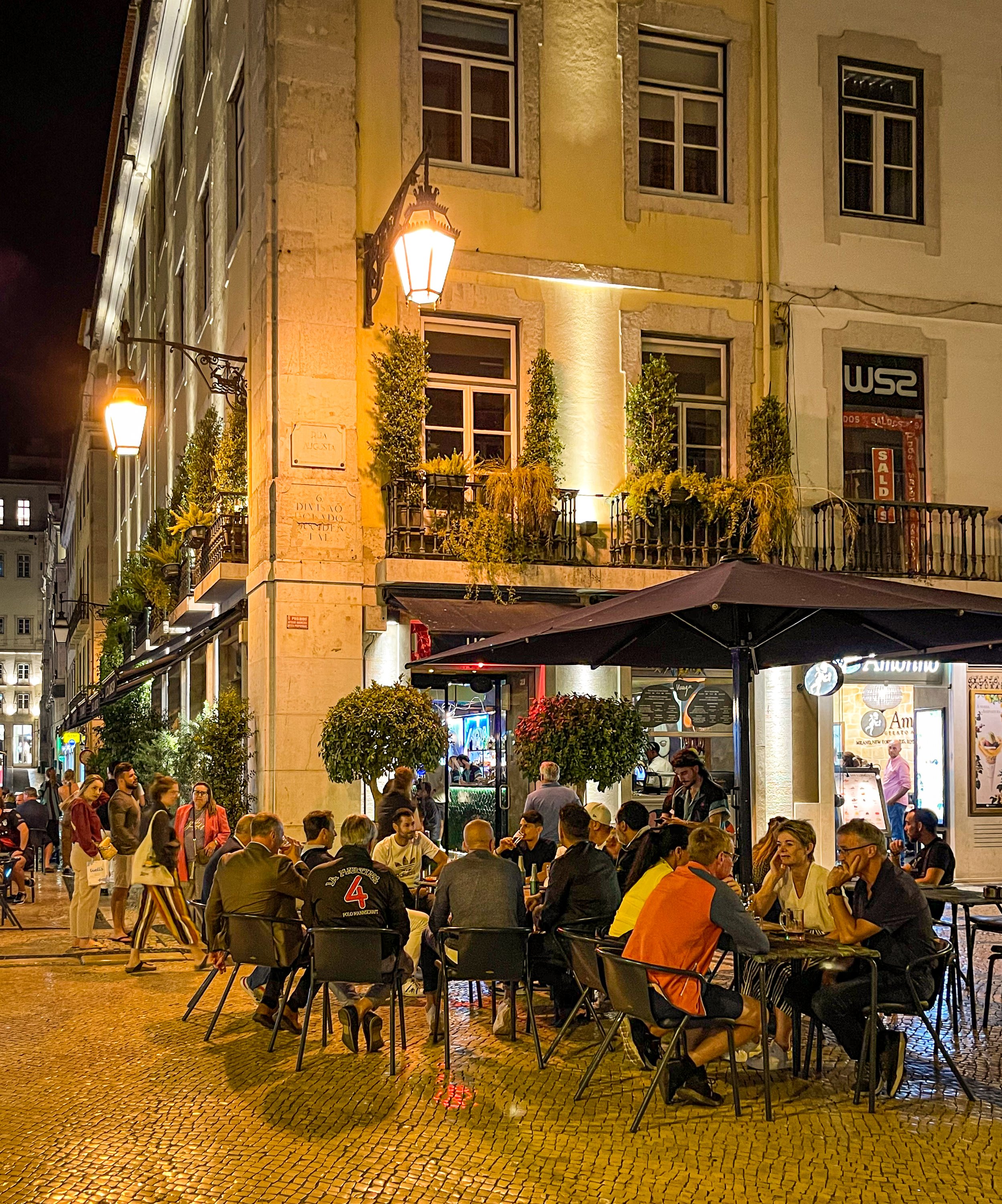
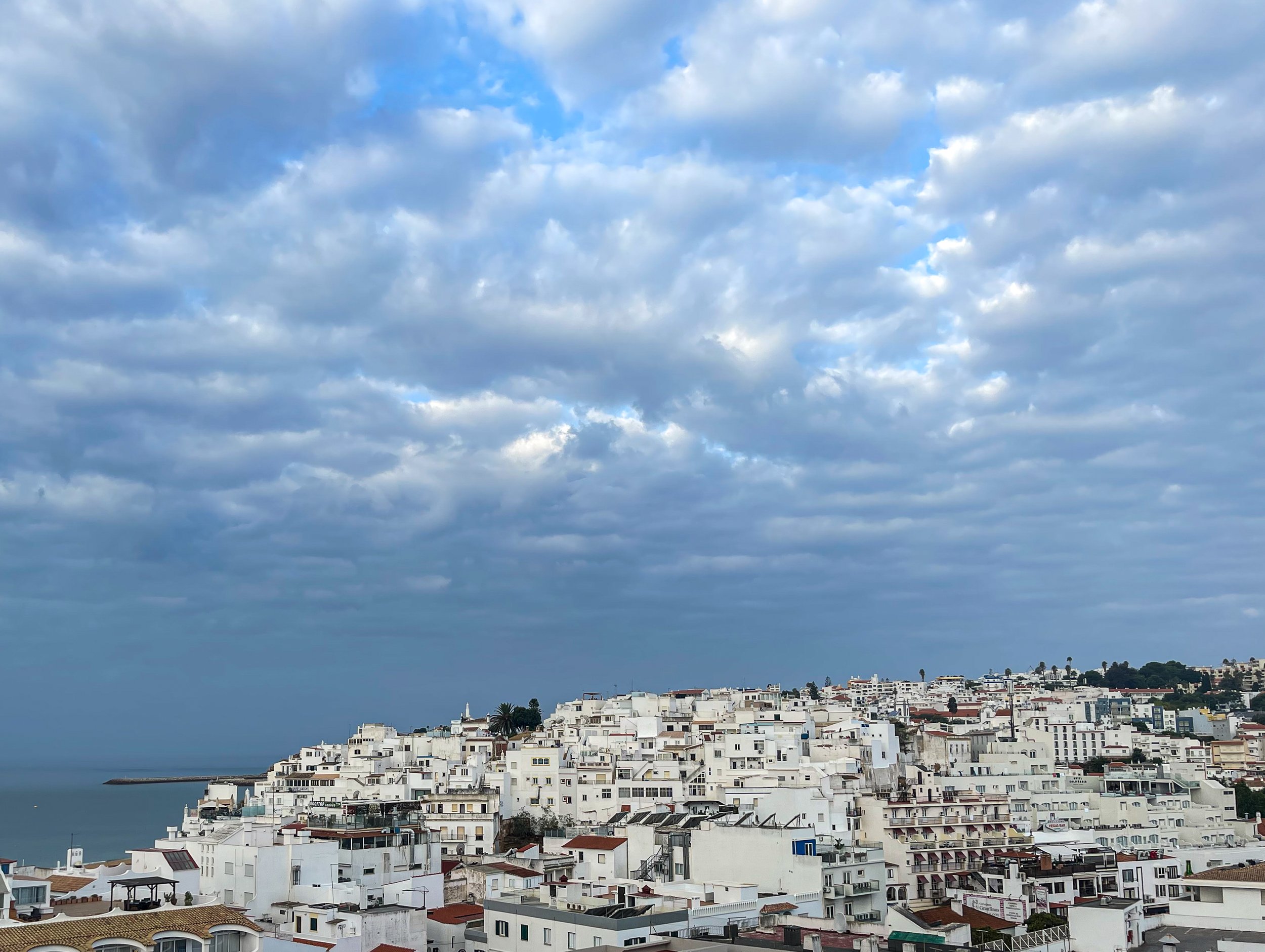

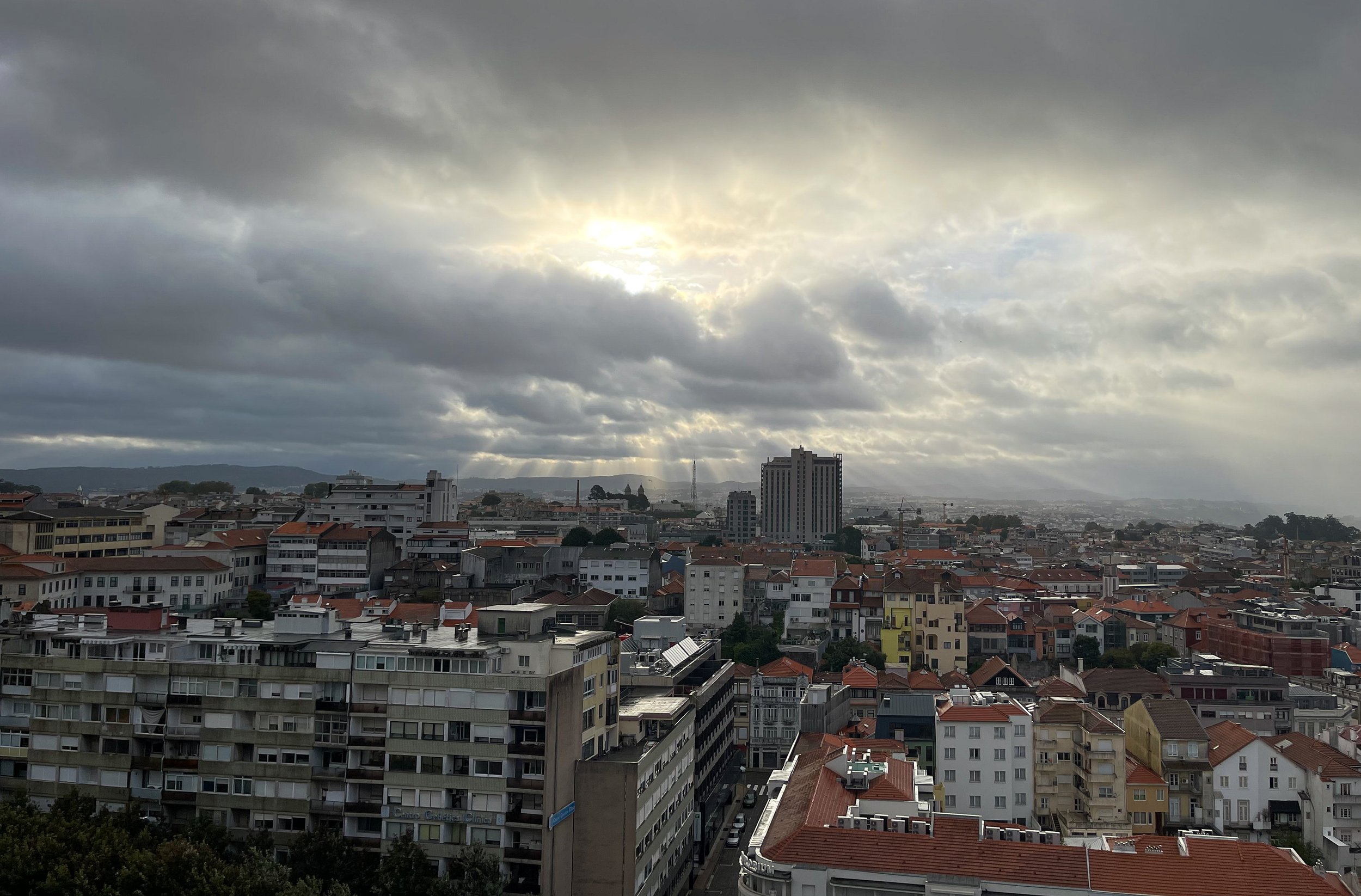
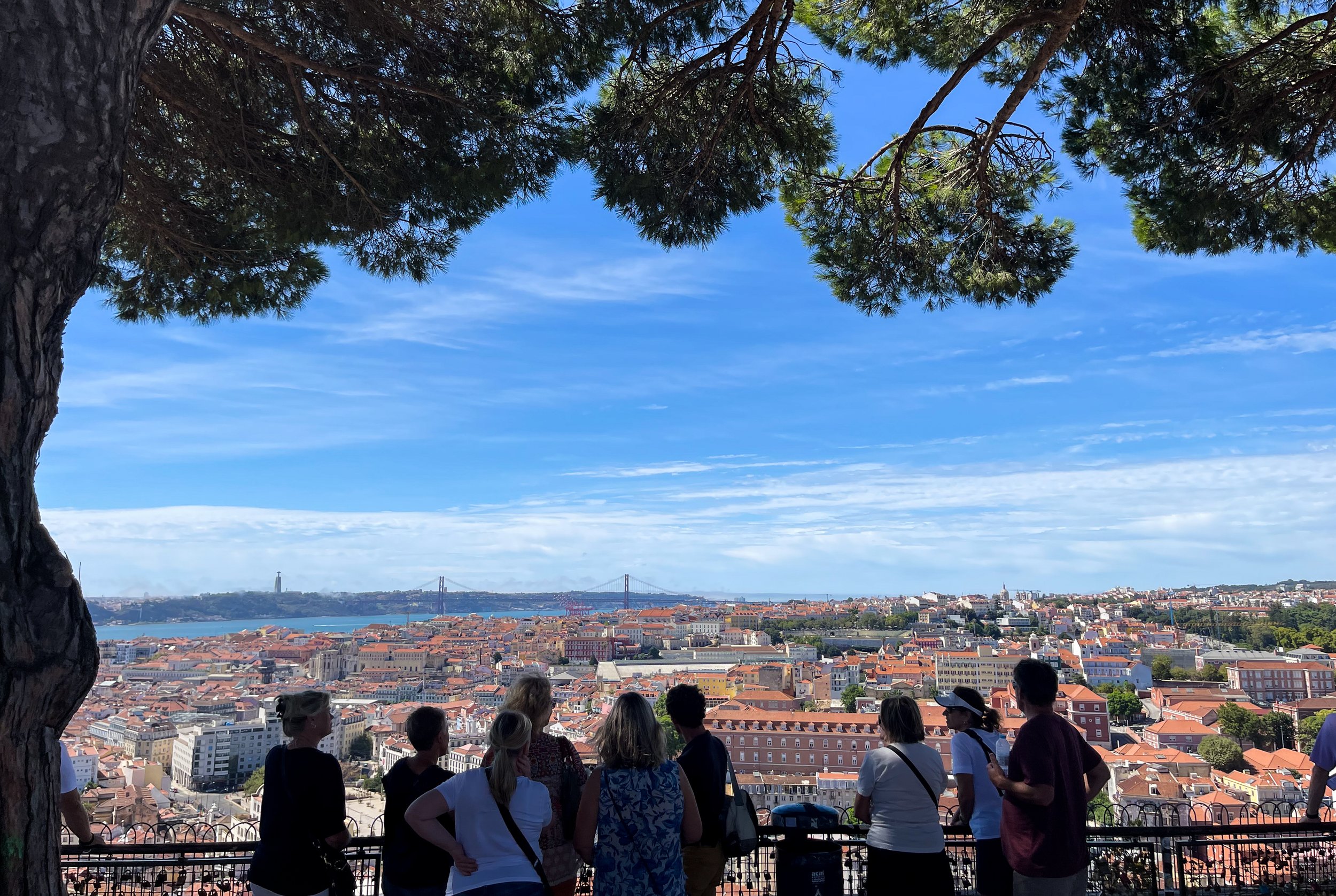

Miradouro da Senhora do Monte, billed as the highest viewpoint in Portugal’s capital city.Located in the Graca neighborhood and next to the Chapel of Nossa Senhora do Monte (English: Our Lady of Mount), the area is also known as the “Viewpoint of the Lady of the Mount.”The Castle of Saint George (on a hill to the far left) and the Ponte 25 de Abril Bridge, which spans the Tagus River in the distance, are among the city’s landmarks that can be seen from this perch.(Photo: © Joseph Kellard/kellardmedia.com)

The Benagil Sea Cave is a rock formation located along the limestone cliffs along the southernmost coast of Portugal.

The Aqueduct of Pegões snakes some 3.7 miles through the countryside of Tomar in Portugal. The structure sports 180 arches, both rounded and pointed, and stands 100 feet at its highest point, where there are two tiers of arches. Filippo Terzi, the chief architect of King Philip I of Portugal, designed the aqueduct that was built from 1593 to 1614. It supplied water to the monks at the Convent of Christ monastery in Tomar from the neighboring village of Pegões, where natural springs flowed freely.

A tram cruises along the streets of Lisbon. This was a shot I took during a photography walking tour of the city. Here, my instructor was trying to teach me how to create nighttime motion blur in my photos with my new Sonya74. Not ideal, but it’s a start. One of a couple of images of this kind that I’ll post here in the future. @miguelangelosilva @photowalkslisboa(Photo: © Joseph Kellard/kellardmedia.com)

A wave of cobblestones flow across Rossio Square in Lisbon. The optical-illusion pattern was originally paved in this central locale of Portugal’s capital city during the 19th century. In the Pombaline Downtown, Rossio Square is the locals’ name for King Pedro IV Square, designated for the monarch of Portugal whose reign was from 1822 to 1831.
The square has a colorful history stretching back to the Middle Ages, the site of everything from political revolts to bullfights to public executions.
When I was there in September 2022, Lisboners gathered at the square to protest the Russian invasion of Ukraine. The square is surrounded by cafés, restaurants, shops and the Maria II National Theatre, pictured here in the distance, which was built during the 1840s. (Words/Photo: © Joseph Kellard/kellardmedia.com)

A picturesque scene from the Ribeira district on the banks of the Douro River in Porto, Portugal’s second most populous city.The revitalized waterfront is a charming and bustling slice of the city’s central historic district, lined with shops, restaurants, ships and boats.The outstanding backdrop is The Dom Luis I, a double-deck arched metal bridge that spans more than 560 feet across the Douro.The bridge was built from 1881 to 1886 on a design by a disciple of Gustave Eiffel, the French engineer, and connects Ribeira to the city of Gaia. The bridge has two levels, with the top platform supporting the Porto Metro trains that travel alongside a pedestrian walkway.(Photo: © Joseph Kellard/kellardmedia.com)

Known for its canal system, Aveiro is billed as the “Venice of Portugal.” The city, the second most populous in the nation’s central region, is located near a lagoon on the Atlantic coast.I snapped this photo at the central area of Aveiro that is lined with Art Nouveau buildings and colorful boats known as Moliceiros. The flat-bottomed boats resemble Venetian gondolas and were once employed to harvest algae and seagrass, but are now used for tourists.(Photo: © Joseph Kellard/kellardmedia.com)

The multicolored 19th century Pena Palace crowns a mountain peak overlooking Sintra, the lush countryside town some 15 miles northwest of Lisbon.Portugal’s King Ferdinand II built the palace in the mid-1800s for his wife, Queen Maria II. The castle was designed based on a nearby 16th century Hieronymite monastery and a medieval fortress—an eclectic architectural style including Moorish, Gothic, Renaissance, Baroque and Manueline elements.Otherwise known as Palacio Nacional de Pena, the stately structure offers views of the Tagus River and Atlantic Ocean in the distance.For centuries, Portuguese kings selected Sintra as their summer residence, and the town became a favored retreat for Romantic poets, including Lord Byron, who called it “Paradise on earth.” Today, the area is known as the Portuguese Riviera.

The white-washed homes of Albufeira, a coastal town in Algarve, the southernmost region of Portugal. With a history stretching back to ancient Rome, Albuferia was conquered by the Islamic Moors in the 8th century. Starting in the 13th century, Christian forces conquered the area and kicked the Muslims out. Albufeira, a name derived from an Arabic word meaning “castle on the sea,” was designated a town in 1504. Albufeira remained a small fishing village for centuries. Starting around the 1960s, the town turned into a major tourist destination and today has an active nightlife.(Photo: © Joseph Kellard/kellardmedia.com)

This pergola is atop a lofty structure and stairs in the beautiful Parque da Cidade (City’s Park) in Aveiro, Portugal. Also called the Infante Dom Pedro, this beautiful park features a duck pond with a pedestrian bridge and lush vegetation throughout. The green is centrally located in Aveiro, a city neighboring a lagoon on the Atlantic coast.Aveiro is the second most populous city after Coimbra in the nation’s central region. Its canal system inspires such nicknames as “the Venice of Portugal” and “the City of the Canals.”(Words/Photo: © Joseph Kellard/kellardmedia.com)

The entrance hall to the São Bento railway station in Porto, Portugal, features a wedding cake ceiling and walls adorned with blue-and-white azulejo tiles painted with images of the nation from centuries past.São Bento was built in the early 20th century based on the Beaux-Art blueprints of architect José Marques da Silva (1869–1947) and on the site of a former monastery devoted to Saint Benedict (the English translation for São Bento).The station was inaugurated in October 1916, and today it is landmarked as a National Monument of Portugal and a UNESCO World Heritage Site.************************************(Words/Photo: © Joseph Kellard/kellardmedia.com)

I captured this man gazing at the blue-and-white azulejo tiles, painted with scenes from Portugal’s history, in the entrance hall at the São Bento railway station in Porto, the nation’s second most populated city after Lisbon. Artist Jorge Colaço (1868-1942) painted the tin-glazed tiles that total 20,000 at the station.

A photo I took of a tour boat docked in the parish of Pinhão in the Douro River Valley of northern Portugal, a region distinguished by vineyards terraced on hills and mountainsides.Here, grapes are cultivated for port wines, of which there are more than 40 varieties.Located east of Porto, the valley is the world’s first demarcated wine region starting in 1756. In addition to vineyards, the region is marked by farms, manor houses and wilderness with diverse wildlife.************************************(Words/Photo: © Joseph Kellard/kellardmedia.com)

The Aqueduct of Pegões in Tomar, Portugal, originally connected natural springs from the neighboring village of Pegões to a fountain in the Main Cloister at the Convent of Christ.When Spain ruled Portugal for 60 years, King Philip II (also King Philip I of Portugal) had Filippo Terzi, his chief architect, design the aqueduct that was built starting in 1593. Pedro Fernando Torres, Teriz’s successor, oversaw its completion in 1614.The structure is 3.7 miles (6 kilometers) long, sports 180 arches, both rounded and pointed, and stands 100 feet at its highest point, where there are two tiers of arches, at the steepest area of the Pegões valley.The aqueduct was built primarily to supply water to the monks at the convent and to cultivate its land and the surrounding area, known as the Seven Hills.Aqueduct of Pegões was designated a national monument in 1910.

A highlight of my trip to Portugal was taking a catamaran tour of the limestone cliffs, caves and rock formations along the nation’s southernmost coast. The rocks were formed over an estimated 20 million years by the Atlantic’s waves crashing into the shore along the region now known as Algarve.(Photo: © Joseph Kellard/kellardmedia.com)#rockformation #rockformations#rockyshore #rockyshores #oldrocks #rockyterrain#catamarantours#Algarve#algarve🇵🇹#AlgarvePortugal#AlgarveCoast#AlgarveLovers#AlgarveAlive#AlgarveTourism#VisitAlgarve


A structure with lofty stairs and a pergola in the beautiful Parque da Cidade (City’s Park) in Aveiro, Portugal. The park is also known as the Infante Dom Pedro and has a duck pond with a pedestrian bridge and lush vegetation throughout. It is centrally located in Aveiro, a city neighboring a lagoon on the Atlantic coast.Aveiro is the second most populous city after Coimbra in the nation’s central region. Its canal system inspires such nicknames as “the Venice of Portugal” and “the City of the Canals.”

Umbrellas pepper the beach at Albufeira in the southern Algarve region of Portugal.Albufeira is on the Atlantic Ocean and located about 160-miles by boat to the Strait of Gibraltar, the western mouth of the Mediterranean Sea.(Photo: © Joseph Kellard/kellardmedia.com)


A view of a geometrically sculpted garden outside the walls of Silves Castle in Portugal’s southern Algarve region.The ancient Romans reportedly built the first fortification atop the hill where the castle is perched today.When invading the region in the 8th century, the Islamic Moors took the original castle and expanded it in subsequent centuries. They rebuilt the castle with “rammed earth” and red sandstone, according to a sign within the castle. Castle Silves has been called the best example of Arab military architectural design in Portugal.In more recent centuries, Silves Castle was used for various purposes, including for agriculture and to house a prison. In 1910, it was designated a National Monument, and during the 1940s the walls were restored.(Photo: © Joseph Kellard/kellardmedia.com)

Doors of Porto

A slice of Portugal’s Algarve coast featuring shades of orange and yellow limestone cliffs crowned by umbrella-like stone pine trees.(Words/Photo: © Joseph Kellard/kellardmedia.com)

I can claim to have descended, not climbed, the 125 steps that make up the Monumental Stairs in Coimbra, Portugal. Construction to build the stairs reportedly started in 1942 and took 27 years to complete.Students of neighboring Coimbra University use the stairs to go to and from classes. The university is the oldest in Portugal, established in Lisbon in 1290 and relocated several times before arriving at its current location in Coimbra in 1537.(Words/Photos: © Joseph Kellard/kellardmedia.com)

A painting of old Lisbon on blue-and-white azulejo tiles at the Igreja de Santa Luzia church in Portugal’s capital city.

When walking around Lisbon during a night photography walking tour, we came across a neighborhood where people were dining outside on many of the city’s cobblestone streets.(Words/Photo: © Joseph Kellard/kellardmedia.com)

Monument to França Borges by Jardim França Perhaps my favorite sculpture that I came across in Portugal was the Monument to França Borges (1871-1915), a Portuguese journalist and politician who opposed monarchy and championed a republican form of government.I was strolling through a Lisbon park in his name, the Jardim França Borges, when I spotted a tall stone monument—with a bronze allegorical female figure—rising from a bed of vibrant Lantanas.The seated figure, which represents the Portuguese Republic, looks up admiringly at a relief of Borges in profile. She holds a newspaper, recalling his background in journalism that includes founding “O Mundo,” an anti-monarchy publication that upheld republican ideals, in 1890. The First Portuguese Republic was established in 1910, and sculptor Maximiano Alves (1888-1954) created this monument to Borges in 1925.The base of the monument is engraved with Portuguese words that read: “From his herculean work / The Republic emerged / Let us consecrate the fighter.”(Photo: © Joseph Kellard/kellardmedia.com)

Lisbon Botanical Garden

Azulejo tile murals at São Bento railway station in Porto, Portugal.

Title design at Municipal Square in Lisbon.

The Rua Augusta Arch connects Lisbon’s Commerce Square, the official entrance to Portugal’s capital, to Rua Augusta, the city’s central tourist thoroughfare.Portuguese architect Santos de Carvalho designed the triumphal arch, construction of which was completed in 1873, nearly 100 years after the square was built after an earthquake devastated Lisbon in 1755. Sculptor Victor Bastos created the statues of the four historical figures populating the six-columned arch.On the right is 14th-century general Nuno Álvares Pereira and 18th-century statesman and diplomat Sebastião José de Carvalho e Melo (a.k.a., Marquis of Pombal). The left side features Renaissance-era explorer Vasco da Gama alongside Viriatus, a leader of the Lusitanian people who resisted ancient Roman expansion on the Iberian Peninsula. The pair of reclining figures on each side embody the rivers Tagus and Douro.The arch is crowned by an allegorical group representing Glory, middle, rewarding Valor, left, and Genius, created by French sculptor Célestin Anatole Calmels. At the center of the arch is the coat of arms of Portugal.

Glory, the central figure, rewards Valor and Genius, an allegorical group that crowns the Rua Augusta Arch that neighbors Lisbon’s Commerce Square. Glory hovers two crowns over the heads of each figure. Backed by a trophy of flags, Valor, left, wears a high-crested, dragon-patterned helmet representing the House of Braganza, a Portuguese monarchical dynasty, and rests his hands on a dagger and a lion’s head. Genius bears wings and the attributes of writing and the arts. French sculptor Célestin Anatole Calmels created the group for the triumphal arch that was completed in 1873.(Words/Photo: © Joseph Kellard/kellardmedia.com)

A mural of Portugal’s main soccer stars on a building in Portimão, a city in the nation’s Algarve region.The players depicted are Portimão-native João Moutinho, left, Bernardo Silva, Cristiano Ronaldo and William Carvalho.Artist João Samina created the mural as part of an initiative to support the national team in the World Cup in Russia in 2018.(Words/Photo: © Joseph Kellard/kellardmedia.com)

A look out onto Alfama, one of Lisbon’s oldest neighborhoods, and the Tagus River from the Santa Luzia viewpoint, next to the Igreja de Santa Luzia (Church of St. Lucy). The church was the headquarters of the Order of Malta Knights in Portugal when it was built in the 12th century. It was rebuilt after Lisbon’s earthquake in 1755.(Photo: © Joseph Kellard/kellardmedia.com)

Visitors sit under a pergola and look out onto Alfama, one of Lisbon’s oldest neighborhoods, and the Tagus River. This spot is called the Santa Luzia viewpoint, next to the Igreja de Santa Luzia (Church of St. Lucy), originally the headquarters of the Order of Malta Knights in Portugal when it was built in the 12th century. The church was rebuilt after Lisbon’s earthquake in 1755.(Photo: © Joseph Kellard/kellardmedia.com)

The Albufeira Marina features a man-made bay near the beaches of Algarve, Portugal’s southernmost region on the Atlantic. The maritime facility was built in 2003 along with shops, restaurants and the neighboring Albufeira Marina Views, a complex of 10 multicolored apartment buildings that punctuate the sky in Albufeira.(Words/Photos: © Joseph Kellard/kellardmedia.com)

The sun cast shadows on the rolling hills and vineyards of the Douro River Valley in northern Portugal.(Words/Photo: © Joseph Kellard/kellardmedia.com)

On my walk to the Castle of Silves in southern Portugal, I crossed paths with this white home adorned with pretty pink flowers. They arrested my aesthetic sense, which had me pause to snap a photo.(Words/Photo: © Joseph Kellard/kellardmedia.com)

A collage of tiles of Portugal.

While snapping photos of the outstanding panoramic views of Lisbon from Pena Palace atop a mountain in Sintra, I noticed this sculpture standing on a tall outcrop among lush trees in the castle’s park. The bronze artwork is reportedly a medieval knight known as Estatua do Guerreiro (The Warrior Statue) by sculptor Ernesto Rusconi, who completed it in 1848. Some people speculate that the subject is possibly a likeness of either Portugal’s King Ferdinand II or Baron Wilhelm Ludwig von Eschwege, the architect and landscape designer of the palace and its park. For centuries the kings of Portugal selected Sintra as their summer residence, and Ferdinand hired Eschwege to design and build the palace and park in the mid-1800s for his wife, Queen Maria II.************************************(Words/Photo: © Joseph Kellard/kellardmedia.com)

An old tree stands in the Botanical Gardens of the University of Coimbra in Portugal. Some 1,200 species of plants are found at the gardens, where research is conducted as part of studying flora at the school. The gardens were founded in 1772, the same year the university received statues that introduced natural philosophy (i.e., science) and mathematics to the school. The oldest university in Portugal, University of Coimbra originated in Lisbon in 1290, and was relocated to its current location in 1537.(Words/Photo: © Joseph Kellard/kellardmedia.com)

When walking around Lisbon during a night photography tour, we came across a neighborhood where people were dining outside along many of the city’s cobblestone streets.(Words/Photo: © Joseph Kellard/kellardmedia.com)


The São Sebastião/Saint Sebastian Aqueduct runs along a street leading to the entrance of the Botanical Garden of the University of Coimbra, a connection inspiring the structure’s popular name Arcos do Jardim/Arches of the Garden.Designed by Italian engineer Filipe Terzio and completed in 1570 during the reign of King Sebastian I of Portugal, the structure was built on the ruins of an ancient Roman aqueduct that was roughly one kilometer long and supplied water to upper Coimbra, a hilly city in central Portugal.The existing aqueduct with twenty-one arches was constructed to overcome a depression between two hills, one with a monastery; the other a castle.
In 1910, the aqueduct was classified as a National Monument.

This monument to King José I (1750 – 1777) is essentially Portugal’s symbolic equivalent of the Statue of Liberty in America. The bronze equestrian statue is the centerpiece of Commerce Square, considered the official entrance into Lisbon from a marble staircase that rises out of the Tagus River, and the former site of the Royal Ribeira Palace that was destroyed in the great earthquake of November 1755. Called “The Reformer,” José I was the nation’s monarch when the earthquake devastated the capital city, causing a tsunami and fire.Coimbra native Joaquim Machado de Castro (1731–1822) created the statue, reportedly the first cast in bronze in Portugal, in October 1774. Eugénio dos Santos de Carvalho (1711–1760), a Portuguese architect and military engineer, assisted in creating the monument that was unveiled in the new Commerce Square on June 6, 1775, the birthday of José I, as the nation’s first work of public art.
The king is depicted symbolically crushing snakes under his horse’s hoofs as he looks toward the Tagus. The limestone pediment is flanked by two allegorical scenes, Triumph and Fame, symbolizing the continents submitting to the Portuguese Empire that spanned from the Americas to Japan. Triumph (detail in 2nd photo) is represented leading a horse for Europe walking over a human figure standing for the Americas. Fame takes the form of an elephant symbolizing the Asias and a human figure standing for Africa.
Commerce Square (or Praça do Comércio) was built to play a vital role in Portugal’s economy. The square is surrounded on three sides by uniformly designed 18th-century Baroque buildings that housed customs, commercial port activities and government offices.
In the background is the triumphal Rua Augusta Arch, also built after the 1755 earthquake, which is the gateway into central Lisbon. (Words/Photo: © Joseph Kellard/kellardmedia.com)

This monument to King José I (1750 – 1777) is essentially Portugal’s symbolic equivalent of the Statue of Liberty in America. The bronze equestrian statue is the centerpiece of Commerce Square, considered the official entrance into Lisbon from a marble staircase that rises out of the Tagus River, and the former site of the Royal Ribeira Palace that was destroyed in the great earthquake of November 1755. Called “The Reformer,” José I was the nation’s monarch when the earthquake devastated the capital city, causing a tsunami and fire.Coimbra native Joaquim Machado de Castro (1731–1822) created the statue, reportedly the first cast in bronze in Portugal, in October 1774. Eugénio dos Santos de Carvalho (1711–1760), a Portuguese architect and military engineer, assisted in creating the monument that was unveiled in the new Commerce Square on June 6, 1775, the birthday of José I, as the nation’s first work of public art.
The king is depicted symbolically crushing snakes under his horse’s hoofs as he looks toward the Tagus. The limestone pediment is flanked by two allegorical scenes, Triumph and Fame, symbolizing the continents submitting to the Portuguese Empire that spanned from the Americas to Japan. Triumph (detail in 2nd photo) is represented leading a horse for Europe walking over a human figure standing for the Americas. Fame takes the form of an elephant symbolizing the Asias and a human figure standing for Africa.
Commerce Square (or Praça do Comércio) was built to play a vital role in Portugal’s economy. The square is surrounded on three sides by uniformly designed 18th-century Baroque buildings that housed customs, commercial port activities and government offices.
In the background is the triumphal Rua Augusta Arch, also built after the 1755 earthquake, which is the gateway into central Lisbon. (Words/Photo: © Joseph Kellard/kellardmedia.com)

Dawn arrives on the shore of Albufeira in Portugal.(Words/Photo: © Joseph Kellard/kellardmedia.com)

A fox mural made of titles in Lisbon.

While exploring central Lisbon by foot, I stumbled upon this charming square with a coffee stand, cafe tables with umbrellas, and benches all shadowed by jacaranda trees.Known as Largo do Carmo, the square is surrounded by historical buildings and properties and was the site of everything from revolutionary activities to the filming of movies, documentaries and advertisements. On one side of the square (to the left but outside of my photo) is the former Carmo Convent, a medieval Catholic monastery and church that was destroyed in the earthquake of 1755, the ruins of which remain as a mark of the natural disaster. Another building nearby is the Carmo Barracks which was instrumental in the Carnation Revolution, a military coup of an entrenched authoritarian dictatorship, which culminated in the square on April 25, 1974.Largo do Carmo also borders the former building of the Palácio Valadares. This 18th-century palace was built on the site that housed the first university of Portugal in 1290, which later relocated to Coimbra, a city in central Portugal, now the University of Coimbra. (That site is occupied by the pinkish-colored building pictured on the left).Features of the square (also outside this photo) include a fountain called Chafariz do Carmo (Carmo Fountain) that was built in 1771.(Words/Photo: © Joseph Kellard/kellardmedia.com)

The Mother Church of Our Lady of Conception is the main parish in Portimão, a city in Portugal’s southern Algarve region. Gonçalo Vaz de Castelo Branco, a lord of Portimão, proposed to build the Roman Catholic church that was originally constructed in the Gothic style and completed in 1476. But an earthquake destroyed the church in 1755. It was rebuilt with Manueline and Baroque influences.(Words/Photo: © Joseph Kellard/kellardmedia.com)

Dawn cracks on the beach at Albufeira on the southernmost coast of Portugal. The city is on the Atlantic Ocean, about 160-miles by boat to the Strait of Gibraltar, the western mouth of the Mediterranean Sea.(Photo: © Joseph Kellard/kellardmedia.com)

A wall with graffiti and portraits in Coimbra, Portugal.(Words/Photo: © Joseph Kellard/kellardmedia.com)

A slice of Portugal’s Algarve coast with limestone cliffs capped by umbrella-like stone pine trees.(Words/Photo: © Joseph Kellard/kellardmedia.com)

Among the most historic sites in Portugal, the Castle of Tomar and Convent of Christ sit atop a mountain in the Seven Hills overlooking the city and Nabao River.The castle and convent were built in 1160 by the Order of the Knights Templar, a Jerusalem-based Roman Catholic Church-endorsed military order tasked with protecting Christian pilgrims traveling to the Holy Land during the Crusades. The Order’s Portuguese branch was founded by a Gualdim Pais (1118-1195), who also took up arms against the Islamic Moors expanding their domain after invading the Iberian peninsula in the 8th century.The castle originally comprised a walled village, a yard and a military house. The Moors surrounded and besieged the fortification in 1190, but Pais, the grand master of the Portuguese Knights Templar, led the victory over the Muslim forces, who retreated after six days.That year, Pais had an octagonal church (the Round Church) built inside the castle to symbolize the victory. The church was the first of several structures raised there over five centuries, featuring Gothic, Romanesque, Renaissance, Baroque, Mannerist and especially Manueline architectural elements. Among them was a Manueline Church that was connected to the rotunda.After the Knights Templar lost their stronghold in Jerusalem and were dissolved in the early 14th century, Portugal’s King Dinis (1279-1325) revived and repurposed the Portuguese branch as the Military Order of Christ in 1334. By 1357, the new Order was seated at the castle, and eight cloisters were added to the convent in succeeding centuries.During the 15th century, the Order of Christ supported Portugal’s maritime discoveries that established the nation’s empire, particularly under Prince Henry the Navigator (1394-1460), its grandmaster who lived in the Castle of Tomar during the Age of Discovery.(Words/Photo: © Joseph Kellard/kellardmedia.com)

After the Castle of Tomar and Convent of Christ were built in 1160, Gualdim Pais (1118-1195), the grand master of the Portuguese Order of Knights Templar, constructed an octagonal church within a 16-sided exterior. Also called the Round Church or Charola, the structure was built in 1190 to symbolize the military Order’s defeat of the Islamic Moors, who had attacked the castle earlier that year.This Romanesque rotunda with eight interior pillars was designed based on the Church of the Holy Sepulchre in Jerusalem, the city where the Catholic Church-endorsed Knights Templar were headquartered and spread across the Holy Land and Europe. Legend has it the Knights Templar, wearing their signature white tunics with a crimson cross on their chests, attended mass there while on horseback. The church was the first of multiple buildings constructed at the castle over several centuries.When the Order disbanded in the early 14th century, Portugal’s King Dinis (1279-1325) created the Military Order of Christ in 1319, who later made their home at the castle’s convent.After friars joined the Order, the rotunda was renovated and decorated during the 15th and 16th centuries, boasting their riches. During the first half of the 1400s, Prince Henry the Navigator (1394-1460), who served as the grand master of the Order, had a nave attached to the church.(Words/Photo: © Joseph Kellard/kellardmedia.com)

A series of eight cloisters were added to the Castle of Tomar and Convent of Christ in Portugal mainly during the 16th century.One of them has several names ascribed to it, the King João/John III, King Philip I, Royal, and Main Cloister, which was built in dual phases during the 1500s.King João/John III of Portugal (1502-1557) employed João de Castilho (1470-1552), a premier Portuguese architect, to design and build the cloister. When Portugal lost its independence to Spain for 60 years, the cloister was completed by King Philip II of Spain (1527-1598), who was also King Philip I of Portugal. When João de Castilho died in 1552, the cloister was redone in the Mannerist Italian Cinquecento style by Diogo de Torralva (1500-1566), between 1557 and 1566, in honor of King Philip, who made the convent the kingdom’s seat in 1581.Among the cloister’s features are twisting stairs and a fountain that received water from an aqueduct, one of the final structures built at the castle.************************************(Words/Photo: © Joseph Kellard/kellardmedia.com)

As grand master of the Order of Christ, Prince Henry the Navigator (1394-1460) built two Gothic-style cloisters at the society’s home at the 12th-century Castle of Tomar in Portugal.The Cemetery Cloister (pictured here in both photos) was designed and built with pointed Gothic arches by architect Fernão Gonçalves, and served primarily as a burial facility for the friars and knights at the site’s expanding Convent of Christ. Among those entombed there are Diogo da Gama (who died in 1523), brother of the famous Portuguese navigator Vasco da Gama; Baltazar de Faria (died in 1584); and Pedro Àlvares Seco de Freitas (died in 1599). The cloister was remodeled at the start of the 17th century.In my feature photo here, the vertical building in the background of the Cemetery Cloister is the Round Church, constructed in 1190, which was the foundational structure of the future convent.Prince Henry’s Washing/Laundry Cloister (not pictured) was built about 1433 and took its name from the monks who washed their clothes there.************************************(Words/Photo: © Joseph Kellard/kellardmedia.com)

The 12th-century Castle of Tomar and Convent of Christ cover five of the complex’s 45 acres of terrain that includes gardens, forests and multiple hills atop a mountain overlooking the city in central Portugal.As he developed the convent for the Order of Christ, King João/John III of Portugal (1502-1557) connected the complex to a wall he built around the neighboring rural area known as Place of the Seven Hills, characterized by steep mountains and a deep valley surrounded by seven hills.Today, the area is designated the Seven Hills National Forest and the Castle of Tomar/Convent of Christ is a UNESCO World Heritage Site, one of the most historically significant sites in Portugal.(Words/Photo: © Joseph Kellard/kellardmedia.com)

I snapped this photo of a man climbing a flight of stairs while on a night photography walk in #Lisbon w/ guide @miguelangelosilva / @photowalkslisboa(Words/Photo: © Joseph Kellard/kellardmedia.com)

A boat motors past the vineyards of Pinhão on the Douro River in northern Portugal.Here, grapes are cultivated for port wines, of which there are more than 40 varieties.Located east of Porto, the Duoro River Valley is the world’s first demarcated wine region starting in 1756. In addition to vineyards, the region is marked by farms, manor houses and wilderness with diverse wildlife.(Words/Photo: © Joseph Kellard/kellardmedia.com)

A limestone arch formed over millions of years on the coast of the Algarve, the southernmost region of Portugal.(Words/Photo: © Joseph Kellard/kellardmedia.com)************************************

Pena Palace rests on a mountaintop in Sintra and offers expansive views of the Portuguese Riviera, some 15 miles northeast of Lisbon, which includes the Atlantic Ocean and Tagus River.Portugal’s King Ferdinand II hired architect Baron Wilhelm Ludwig von Eschwege to design the multicolored castle and its park in the mid-1800s, for his wife, Queen Maria II. Von Eschwege took inspiration from a nearby monastery and a medieval fortress in creating the castle that is a mix of Moorish, Gothic, Renaissance, Baroque and Manueline architectural styles.Sintra is a lush area where Portugal kings summered for centuries.(Words/Photo: © Joseph Kellard/kellardmedia.com)

A juniper grows within a trellis-like design at Jardim do Príncipe Real, a garden and park in Lisbon.(Words/Photo: © Joseph Kellard/kellardmedia.com)

Passengers lean through windows in a tram in Lisbon.(Photo: © Joseph Kellard/kellardmedia.com)

The Residencial União, a hotel in the São João Baptista neighborhood of Tomar, features a facade with azulejos tiles painted with scenes in blue and white, a characteristic artistic flourish of Portuguese architecture.(Words/Photo: © Joseph Kellard/kellardmedia.com)


Horseback riders flirt with the edge of a limestone rock cliff in the Algarve region of southern Portugal.(Words/Photo: © Joseph Kellard/kellardmedia.com)

A boat slices through a fog that rolls over the Tagus River, backdropped by the 25 de Abril Bridge and Sanctuary of Christ the King monument and shrine in Portugal. The 7,470-foot suspension bridge connects Lisbon to the municipality of Almada on the river’s south bank, where the Catholic monument rises into the dusky sky.
Originally named Salazar Bridge, after Portugal’s prime minister, the structure was renamed 25 de Abril to reflect the date of the Carnation Revolution that overthrew the Salazar regime on April 25, 1974.
Based in Almada, Sanctuary of Christ the King was inspired by the Christ the Redeemer statue that overlooks Rio de Janeiro after a Lisbonense cardinal visited the Brazilian monument.Words/Photo: © Joseph Kellard/kellardmedia.com

This stone fountain is in Central Square, considered the birthplace of the Botanical Gardens of the University of Coimbra in Portugal. The gardens were founded in 1772, the same year the university received statues that introduced mathematics and natural philosophy, or science, to the school. Some 1,200 species of plants are found at the gardens, where research is conducted as part of the study of flora at the school. Central Square is distinguished by geometrically designed flower beds, magnolias, azaleas, cherry trees, iron gates and walls. The oldest university in Portugal, University of Coimbra originated in Lisbon in 1290, and was relocated to its current location in 1537.(Photo: © Joseph Kellard/kellardmedia.com)

The building of the District Council of Aveiro, the second most populous city in Portugal’s central region (after Coimbra). Neighboring a lagoon on the nation’s Atlantic coast, Aveiro has a canal system that inspires such nicknames as “The City of the Canals” and “the Venice of Portugal.”(Words/Photo: © Joseph Kellard/kellardmedia.com)

Several rock formations on Portugal's southernmost coast have holes in their roofs. The limestone rocks were formed over an estimated 20 million years by the Atlantic’s waves crashing into the shore along a region now known as Algarve.(Photo: © Joseph Kellard/kellardmedia.com)

Blue-and-white azulejo tiles cover the facade of the Chapel of Souls, an 18th century house of worship in Porto, Portugal. The Death of Saint Francis of Assisi and the Martyrdom of Santa Catarina are among the scenes artist Eduardo Leite depicted in the 16,000 tiles in 1929. Also known as the Chapel of Santa Catarina, the building also features a bell tower.(Words/Photo: © Joseph Kellard/kellardmedia.com)


A boat cruises along the Douro River toward the Infante Dom Henrique Bridge in Porto, Portugal.(Words/Photo: © Joseph Kellard/kellardmedia.com)

A tram cruises along the streets of Lisbon.(Photo: © Joseph Kellard/kellardmedia.com)

Mosaics of large tiles in Aveiro, Portugal.(Words/Photo: © Joseph Kellard/kellardmedia.com)

Largo da Portagem is the central square in Coimbra, which features a bronze statue of Joaquim António de Aguiar (1792–1874), a three-time prime minister of Portugal.Sculptor Costa Motta (1862-1930) depicted him holding a pen and sheet of paper, symbolizing his signing a decree to abolish religious sects in Portugal. The monument was dedicated in 1911.(Words/Photo: © Joseph Kellard/kellardmedia.com)


Let’s take a walk along the Mondego River toward the Santa Clara Bridge in the Manuel Braga Park in Coimbra, Portugal.(Words/Photo: © Joseph Kellard/kellardmedia.com)

Graffiti art is Lisbon

Pena Palace rests on a mountaintop in Sintra and offers expansive views of the Portuguese Riviera, some 15 miles northeast of Lisbon, which includes the Atlantic Ocean and Tagus River.Portugal’s King Ferdinand II hired architect Baron Wilhelm Ludwig von Eschwege to design the multicolored castle and its park in the mid-1800s, for his wife, Queen Maria II. Von Eschwege took inspiration from a nearby monastery and a medieval fortress in creating the castle that is a mix of Moorish, Gothic, Renaissance, Baroque and Manueline architectural styles.Sintra is a lush area where Portugal kings summered for centuries.(Words/Photo: © Joseph Kellard/kellardmedia.com)

Doors of Lisbon


A rock formation posing as a natural wall in Algarve, Portugal.(Words/Photo: © Joseph Kellard/kellardmedia.com)

The Bank of Portugal building in Coimbra.(Words/Photo: © Joseph Kellard/kellardmedia.com)

A vineyard baked into the hills of the Douro River Valley in northern Portugal.(Words/Photo: © Joseph Kellard/kellardmedia.com)

A view from inside Silves Castle, in Portugal’s southern Algarve region.The ancient Romans reportedly built the original fortification atop the hill where the castle is perched today.The Islamic Moors took the castle when they invaded the region in the 8th century and expanded it in subsequent centuries. They rebuilt the castle with “rammed earth” and red sandstone, according to a sign within the castle. Castle Silves has been called the best example of Arab military architectural design in Portugal.In recent centuries, the castle was used for various purposes, including for agriculture and to house a prison. In 1910, Silves Castle was designated a National Monument. Its walls were restored in the 1940s.(Photo: © Joseph Kellard/kellardmedia.com)

Bust of Woman at Praça do Município in Lisbon.

Homes perched atop the multicolored rocky cliffs on the coast of Algarve, the southernmost region of Portugal.(Words/Photo: © Joseph Kellard/kellardmedia.com)




A cafe in Porto.


A train crosses The Dom Luis I, a double-deck arched metal bridge that spans more than 560 feet across the Douro River, in Porto, Portugal. The bridge was built from 1881 to 1886 on a design by a disciple of Gustave Eiffel, the French engineer, and connects Ribeira to the city of Gaia. The bridge has two levels, with the top platform supporting the Porto Metro trains that travel alongside a pedestrian walkway.(Photo: © Joseph Kellard/kellardmedia.com)


Fisherman on rocks along the shore in Albufeira, Portugal.

A statue of King Sancho I of Portugal at Silves Castle





The sun sets on the white-washed homes in Albufeira, a coastal town in Algarve, the southernmost region of Portugal. With origins stretching back to ancient Rome, Albuferia was conquered by the Islamic Moors in the 8th century. Starting in the 13th century, Christian forces conquered the area and kicked the Muslims out. Albufeira, a name derived from an Arabic word meaning “castle on the sea,” was designated a town in 1504. Albufeira remained a small fishing village for centuries. Starting around the 1960s, the town turned into a major tourist destination and today has an active nightlife.


A cityscape of Porto, Portugal.(Words/Photo: © Joseph Kellard/kellardmedia.com)

info
prev / next
1
2
3
4
5
6
7
8
9
10
11
12
13
14
15
16
17
18
19
20
21
22
23
24
25
26
27
28
29
30
31
32
33
34
35
36
37
38
39
40
41
42
43
44
45
46
47
48
49
50
51
52
53
54
55
56
57
58
59
60
61
62
63
64
65
66
67
68
69
70
71
72
73
74
75
76
77
78
79
80
81
82
83
84
85
86
87
88
89
90
91
92
93
94
95
96
97
98
99
100
101
102
103
104
105
·
·
·
·
·
·
·
·
·
·
·
·
·
·
·
·
·
·
·
·
·
·
·
·
·
·
·
·
·
·
·
·
·
·
·
·
·
·
·
·
·
·
·
·
·
·
·
·
·
·
·
·
·
·
·
·
·
·
·
·
·
·
·
·
·
·
·
·
·
·
·
·
·
·
·
·
·
·
·
·
·
·
·
·
·
·
·
·
·
·
·
·
·
·
·
·
·
·
·
·
·
·
·
·
·
